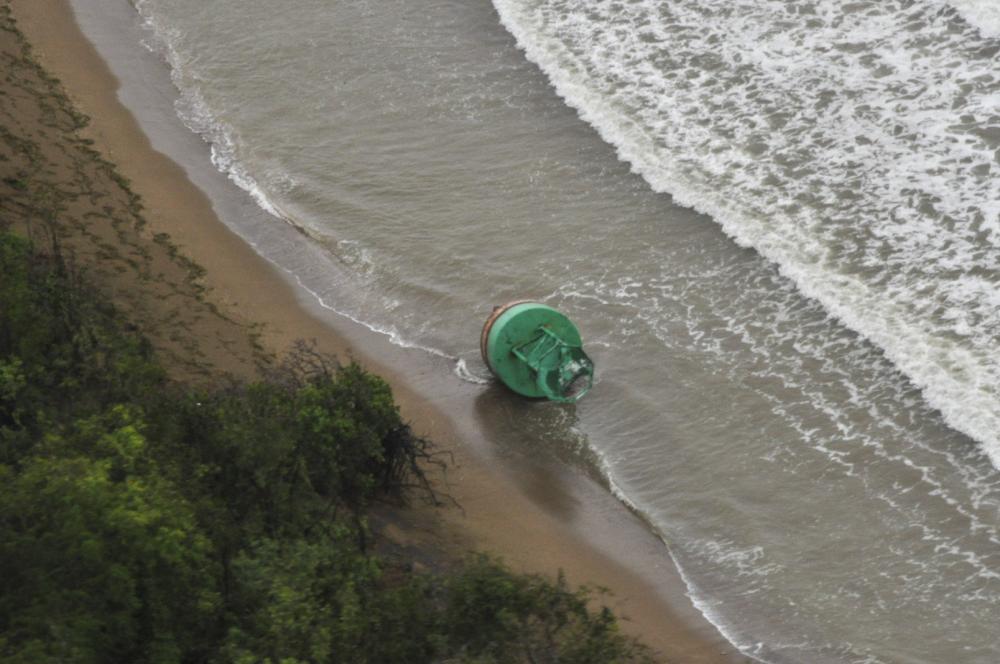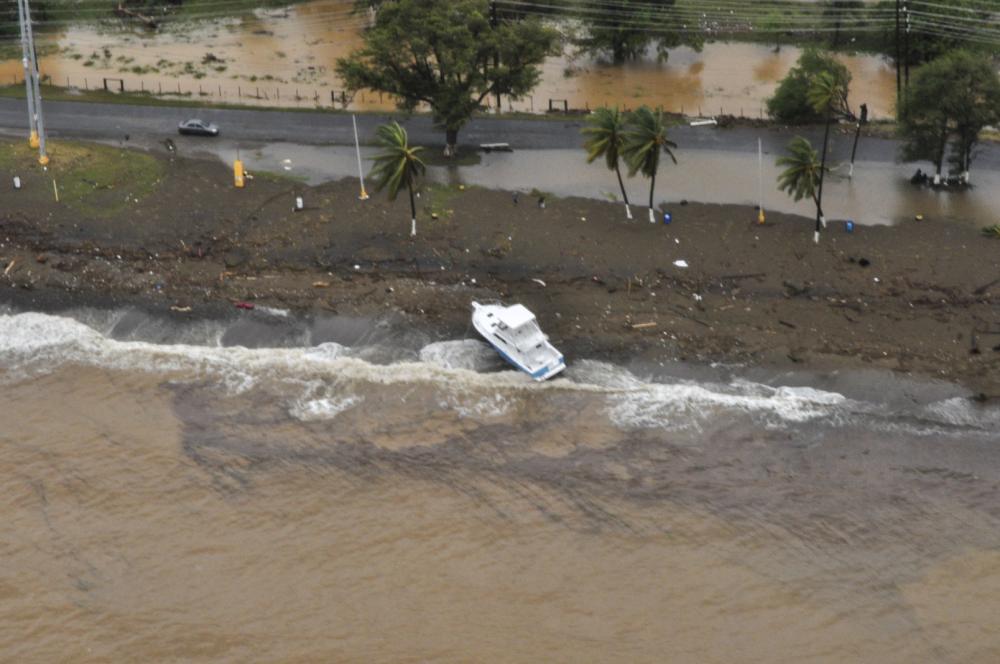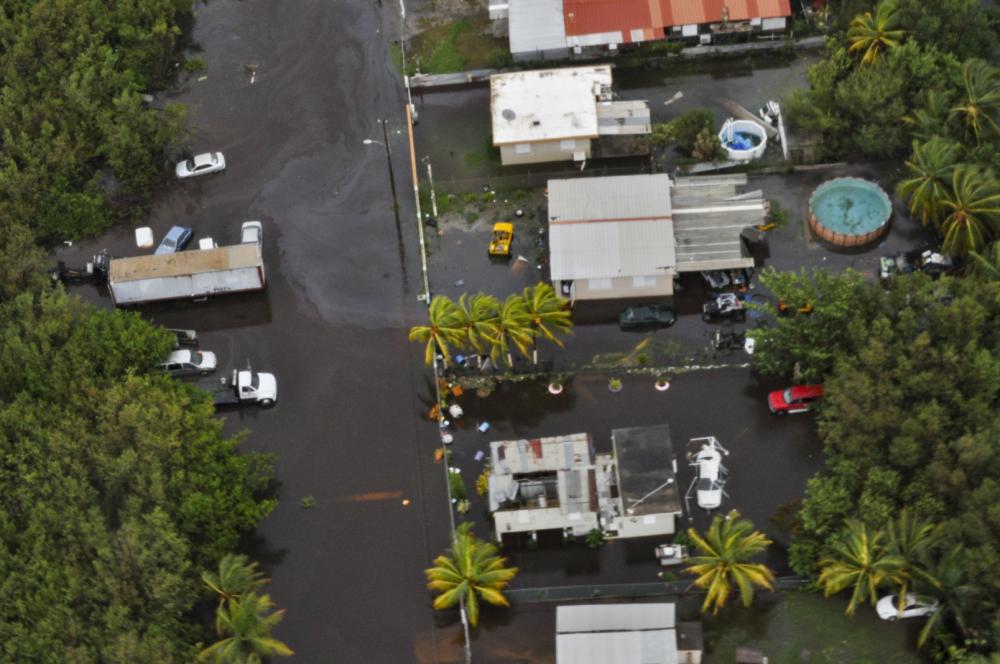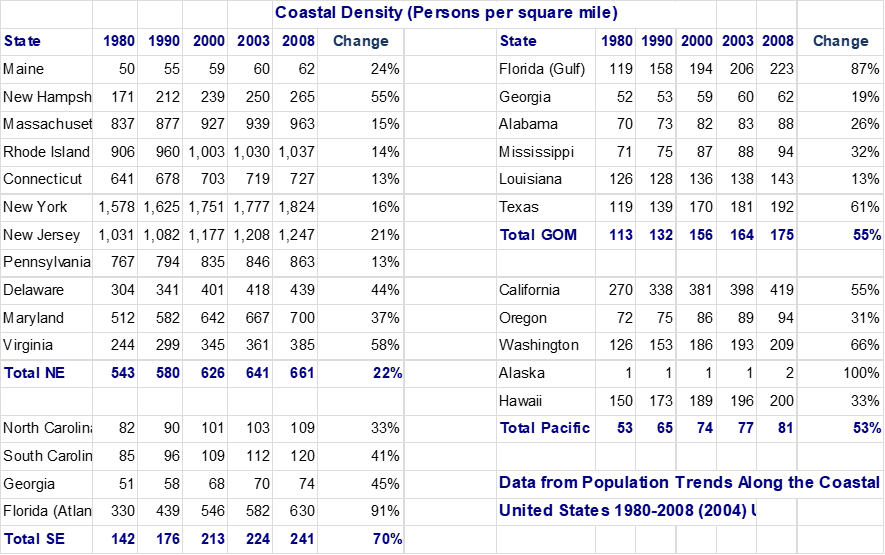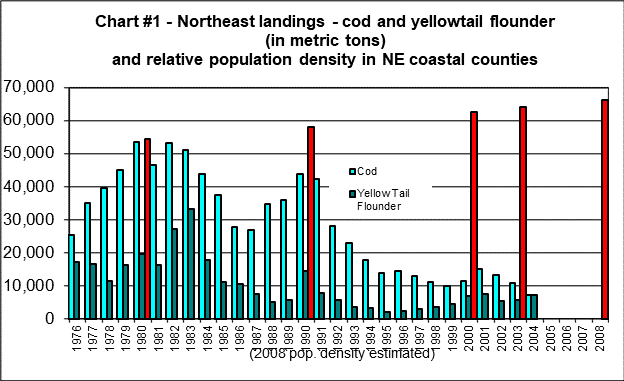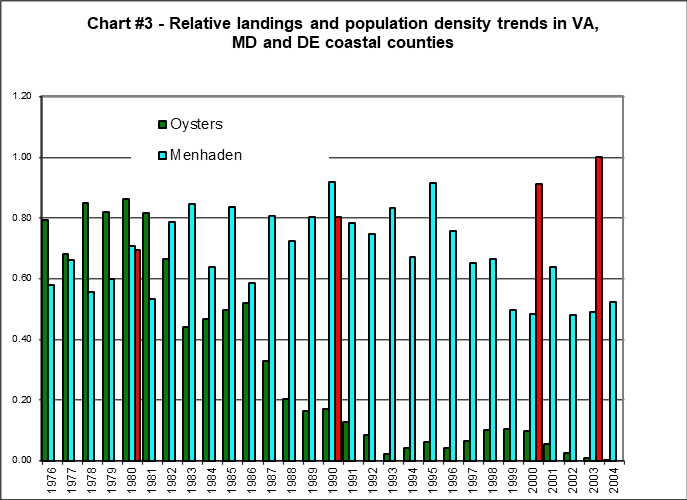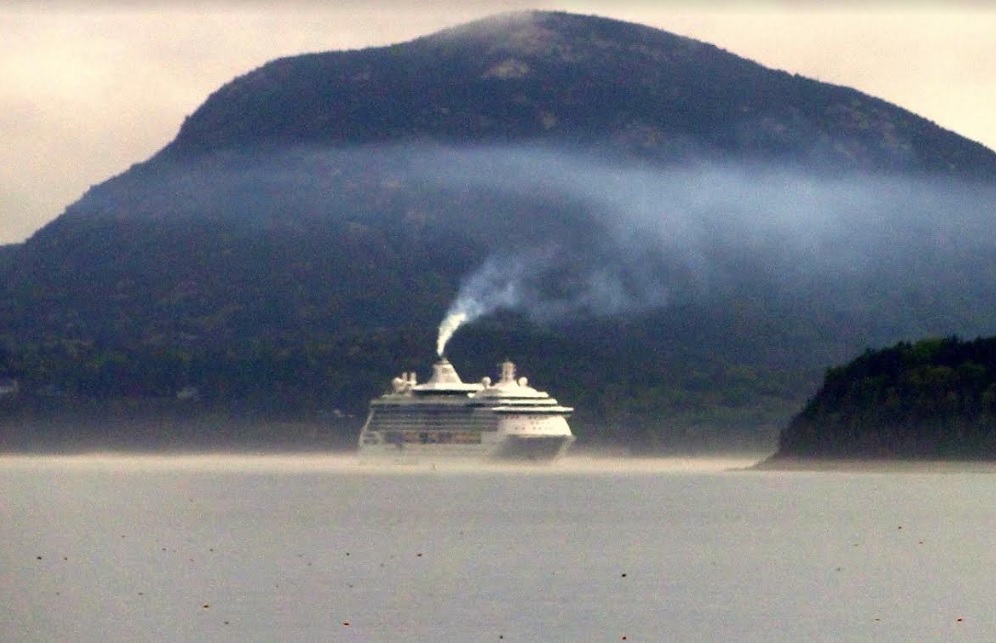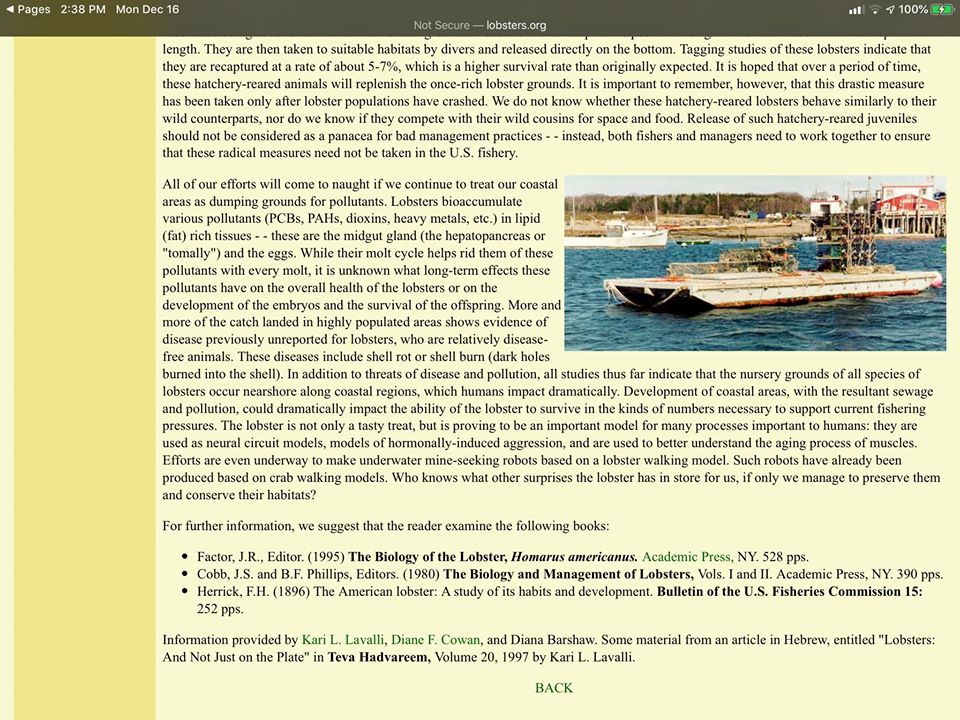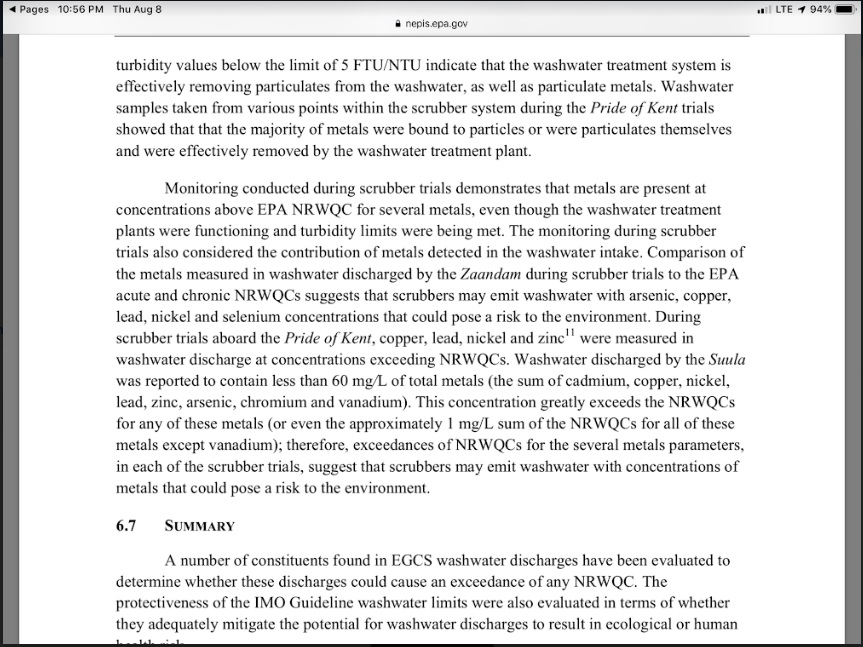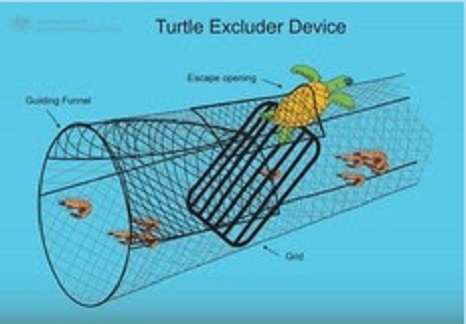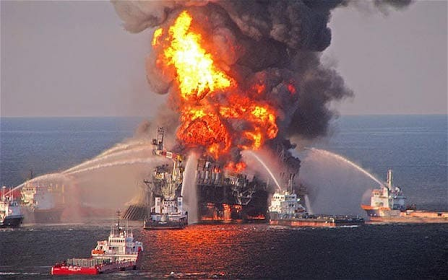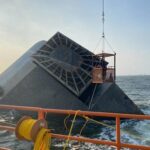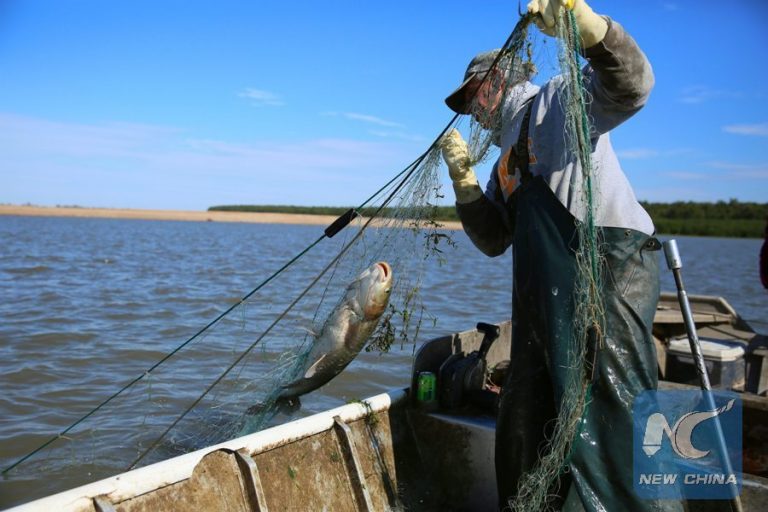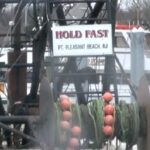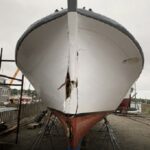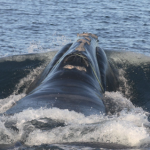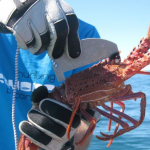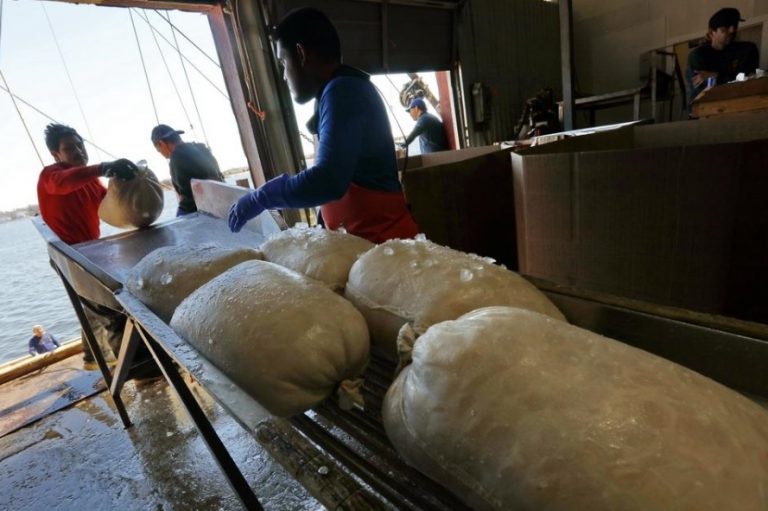Search Results for: Caribbean

New nets make shrimp trawling more sustainable in Latin America and Caribbean
The FAO is conducting the project, known as The Sustainable Management of Bycatch in Latin America and Caribbean Trawl Fisheries (REYBAC LAC II), between 2015 and 2020 with the intention of meeting international guidelines for the responsible management of bycatch. With the help of traditional and large-scale fishers, the project consists of testing net prototypes that reduce the negative effects of trawling on marine biodiversity while still catching shrimp. The new nets have different characteristics than those usually used by fishers, mainly in regard to the size of the holes in the fabric of the net. >click to read<10:34
Eastern Caribbean whalers follow a 139-year-old tradition, now under siege – Why? Because the Eco Evangelicals need to feel good.
 Gaston Bess, “Whaling is a tradition around Bequia,” he says. “We will continue to whale, and we’ll continue the tradition.” Sue Fisher, an animal advocate with the Washington-based Animal Welfare Institute, hopes St. Vincent’s license won’t be renewed again. “They are not able to demonstrate a long-standing need for whale meat. They like it, they eat it, but it’s not meeting any nutritional subsistence needs. They are not struggling for protein.” Read more here 07:40
Gaston Bess, “Whaling is a tradition around Bequia,” he says. “We will continue to whale, and we’ll continue the tradition.” Sue Fisher, an animal advocate with the Washington-based Animal Welfare Institute, hopes St. Vincent’s license won’t be renewed again. “They are not able to demonstrate a long-standing need for whale meat. They like it, they eat it, but it’s not meeting any nutritional subsistence needs. They are not struggling for protein.” Read more here 07:40
Russians planning major Caribbean oil study
 The Russian government last month publicly expressed an interest in Caribbean oil and natural gas exploration, including off the coasts of nations near South Florida. more@keysnet 12:54
The Russian government last month publicly expressed an interest in Caribbean oil and natural gas exploration, including off the coasts of nations near South Florida. more@keysnet 12:54
Greater emphasis needed on Caribbean fisheries
Stretching 200 miles offshore, the Exclusive Economic Zones of most Caribbean nations cover areas of ocean vastly larger than the land masses to which they belong. Despite this, the maritime sector has never had much in the way of encouragement or investment, leaving those who farm or use the sea often feeling neglected when it comes to understanding or decision-making. @carribeanintelligence
Caribbean Fishery Management Council to hold public hearing Monday
 ST. CROIX – The Caribbean Fishery Management Council will have a public hearing Monday night on St. Thomas to accept input from fishers, the public and local agencies on the development of island-specific fishery management plans for Puerto Rico, St. Croix and the St. Thomas-St. John District. @virginislandsdailynews
ST. CROIX – The Caribbean Fishery Management Council will have a public hearing Monday night on St. Thomas to accept input from fishers, the public and local agencies on the development of island-specific fishery management plans for Puerto Rico, St. Croix and the St. Thomas-St. John District. @virginislandsdailynews
Seasonal Prohibition on Fishing Grouper in Caribbean Federal Waters
US – NOAA Fisheries reminds the public there is a seasonal prohibition on fishing for or possession of red, black, tiger, yellowfin, and  in Caribbean federal waters from 12:01 a.m., local time, 1 February through 30 April, 2013. This prohibition on possession does not apply to such grouper harvested and landed on shore prior to the closure. Read more
in Caribbean federal waters from 12:01 a.m., local time, 1 February through 30 April, 2013. This prohibition on possession does not apply to such grouper harvested and landed on shore prior to the closure. Read more
Pollution Kill of ’76
 In the early summer of I 97 6, the New York Bight experienced an algae bloom of unprecedented proportions. Before it u,as over. the EPA estimated that over 2500 square miles of ocean bottom from offshore Long Island, NY south to nearly Atlantic City, NJ experienced kill ratios of bottom dwellers that ranged from an estimated low of 40% to as high as 99.5%.
In the early summer of I 97 6, the New York Bight experienced an algae bloom of unprecedented proportions. Before it u,as over. the EPA estimated that over 2500 square miles of ocean bottom from offshore Long Island, NY south to nearly Atlantic City, NJ experienced kill ratios of bottom dwellers that ranged from an estimated low of 40% to as high as 99.5%.
It was the largest manmade ecological disaster ever known up until that time. (Note – In the 80’s, it was brought out the Russians had sort of nuclear accident in the 50’s that was magnitudes bigger but it was unknown outside of Russia in 1976.)
How it came about was, there was algae bloom some 40-50 miles east of NJ and south of Long Island. Nothing new about that, algae blooms have been around since the dawn of time. What happens is that a fortuitous confluence of elements come together (Cou1d be winds, tides, temperature, specific nutrients -nitrogen – oxygen- phosphates – etc., low predator population, water chemistry, any number of things known and/or unknown) at a place where a particular type of algae are able to take advantage of them. This particular spring there happened to be an unusual amount of South Westerly breezes and I suspect that had an effect as I’ll explain later.
The algae then expand and multiply to a point where they completely use up or overwhelm one of the factors or the factors change (sunlight, temperature, etc) where it can no longer support the bloom any more. The bloom then dies out. The cause of the die off (or limit of the bloom) is called a “limiting factor”.
What happened in this case was the bloom reached the sewage sludge dump area 12 miles east of Long Branch, NJ, where the sludge residue from the sewer plants of New York City, much of Long Island, and northern New Jersey (a region with probably close to 20,000,000 people, and let me tell you, that’s literally a lot of shit) was dumped on an almost daily basis Here the bloom found a brand new source of “food” and expanded explosively.
What made this particular bloom devastating was that this particular form of algae was Certium Tripos and had the most unusual characteristic of being able to change
(metamorphosis) its manner of “feeding” from osmosis (where it absorbed food) to becoming a “meat” eater. When it hit the sludge dump area (sludge being more than 90olo liquid, it spreads over many miles before the solids finally, if ever, hit the bottom), it found a veritable feast of food and got busy. It changed form and got into some serious dining. (I always picture those little round balls opening up vou used to see on television eating all the dirt for Oxytlol soap.’)
Pretty soon it began to reach the limits of its longevity (probably measured in weeks) and began to die off. As it died, it sank to the bottom and rotted. And as it accumulated, it used up all the available oxygen in the decomposition (oxidizing) process, which of course “suffocated” all other oxygen dependent bottom life that couldn’t flee the area.
It probably didn’t affect fish as much (other than destroying food) as they could swim away or up to the surface where there would be plenty oxygen from the wave action. but crabs, clams, worms, anemones, starfish, conches, sand dollars, ……. All died.
The die-off was not an instantaneous process, it took several days or weeks in any given area. As clammers we saw it first in the form of increased catches. The clams were all coming out of the bottom, or staying up longer, to get oxygen; and of course our catches went up. For the first few days or a week, no one realized what was happening. Only that we were getting “hot”.
Finally when the dredges came up with dead clams coming out of their shells, running out down the rings on the bag, dead crabs, smelling, …… Then we knew something was wrong…… What is it? The ocean is dying! They fucking killed it! Who did it? We’ll kill the bastards!
I can still feel the knot my stomach tuned into. Joey Pearce (a skiff fisherman) came to me with a plan to get some C4 (Joey was a Vietnam vet) and blow up the new county sewer treatment plant. We were all angry and frustrated. Nothing we could do.
Within a couple weeks, it had reached nearly to Atlantic City. Listening to the radio one could almost see it working its way south. That’s where the South West wind I talked about before comes in – as it blew the surface water northerly, it must have created a southerly current along the bottom extending the kill area further south. (Envision a conveyor belt – as the surface water moves, something has to replace it. [in other circumstances it has been called “upwelling”.)
I’ve often reflected on the irony of it, on the 200th anniversary of our county, we kil1ed the ocean. (Probably doesn’t really belong here but it’s something that’s been on my mind for 2o years.)
In the months before this happened, I had been getting a lot of ink as President of the National Sea Clammers Association (NSCA). We had just gone through a noisy battle with the State over regulation of the inshore clam beds and a landing tax on clams. The NSCA was less than 25 boat owners but we made a lot of- noise and appeared a lot bigger. (I was always careful to never reveal our size, just “We are the largest organization of boat owners on the East Coast.”, …… stuff like that.)
Dues were pretty stiff (well into the $ 1,000’s per member) and we could afford to hire a lawyer (Charley Sandman, an ex-State Senator and ex-Congressman who had been on the Nixon impeachment committee) and a professional fisheries consultant (Dr. R. Rausch, who had been a salmon fisherman on the West Coast and held two doctorates – Fisheries Biology and Environmental Physiology). Dr. Rausch was the guy who figured out the connection between Cerlium Tripos and the bloom and made sure I understood it all.
At any rate, like I said, I had been getting plenty ink (even the subject of a couple TV shows out of Philadelphia) so naturally reporters would call me for quotes on the kill and of course I always gave them something printable. So I was a natural for a committee that Congressman Jim Howard was forming to “study” the kill.
This was heady business for me and the first (and only as far as I know) meeting was held in the Congressman’s local office in Belmar, NJ. At the meeting was:
. Congressman Howard
. an aide from Washington
. New York Regional Director of the EPA -Jerry Hansler
. Two PhD’s from Hansler’s office
. A couple officers from the League of Women Voters
. A couple officers from The Littoral Society who were divers and had filmed before and after scenes from a local wreck (sickening)
. Reps from a couple more local environmental organizations
. A rep from the party boat industry
. Jack Baker, a local restauranteur of wide reputation
. Matty ????, a local fisherman from Belmar
. Charley Sandman
and me
Any way, the meeting opens up with the Congressman making a “concerned” speech about how hard Congress has worked to stop ocean dumping (it had been, up to then, mandated to stop in ’72, ’76 and then later to in ’81, ’86 and finally did stop around ’89 or 90) and how he hopes we can get to the bottom of things here and straighten them out.
Hansler speaks next about how besieged, beleaguered, underfunded and overworked the EPA is (with some technical bull from his PhDs.). He finishes up by banging the table with his fist and emphatically saying “I’m sick and tired of Congress passing laws to do all this wonderful stuff and not appropriating the money so we can do the job!” (A really impressive performance)
Next comes the divers ‘Before and After film of a local wreck and it was powerful stuff. The Before showed nice clean water with fish swimming around. Crabs, the whole bit. You’da thought it was shot in the Caribbean. The After was ugly. Dirty water, no sign of life anywhere, long stringy shit floating by. Powerful stuff. No arguing with that.
Next comes everybody else in tum expressing concern and how he is glad and relieved to have finally gotten the attention of “the right people” to fix things. (Sandman had skipped out earlier after making a concerned speech on the NSCA’s behalf)
I’m at the end of the table and now it’s my furn. There’s something wrong here. I don’t know what it is, but there’s something wrong. I had a bottle of water a diver friend, Charley Stratton, had given me (*still* got it somewhere). It was a glass quart juice bottle, sortta bell shaped, and had about an inch of sand on the bottom with about a 1/4″ or so of black stuff on top of that and the rest filled with clear ocean water. He had taken a sample from the bottom and had given it to me.
I put the bottle on the table, let it sit there and said “Mr. Hansler, I’m in the surf clam business. I sell clam meat. My customers don’t wanna know the weathers bad. They don’t wanna know my winch is broke down. They don’t wanna know my crew was drunk. The only thing they wanna know is where their clam meat is.”
And with that I took the bottle and shook it a little. The clear water turned instantly black. “And, Mr. Hansler, I don’t wanna know about your problems. You’re the head of the Environmental Protection Agency and when I look at this bottle of water, you haven’t been doing your job too goddamn well. I wanna know where my clean ocean is.”
Well ….. the room goes dead quiet. “Damn,” I thought to myself, ” I really did it now. Pissed off a Congressman. Got the head of the EPA pissed off. All these nice people here know I’m an ass. Embarrassed Jack Baker and Matty who were friends of mine. Nobody’s gonna wanna know me after this.”
Then, wisely, lie thought to himself. “Well fuck it, I might just as well finish the job.” I took the bottle of water in my hand and said, “Mr. Howard, you’ve been a congressman in this district for 6 years (actually it was 4) and you’ve done a pretty good job. Saved the Fort, brought bacon home to the district and such. But Mr. Howard, when I look at this bottle of water, it’s obvious to me you haven’t done enough, and if you can’t handle the goddamn job, we’ll just have to get someone who can!” And with that I shoved the bottle right in his face.
The Congressman turns sheet white (this was in August or September in an election year him a Democrat and a Republican in the White House), the room goes dead quiet. The meeting’s over.
I stand up to leave and the next thing I know, Hansler’s got his arm around my shoulder. “I want to talk to you. You’re just the kind of guy we need to teil us what’s wrong.” And with that he walks me out of the room, past all the reporters waiting outside for the Congressman’s press release and committee comments. We go across the street and get a beer. Turns out he’s a pretty decent guy and we have a good bull session for a couple hours, and we end up friends (another story).
When I read the paper the next day, it sure didn’t sound like the meeting I was at. All sunny days and roses and everybody’s wonderful and we’re going to fix this tragedy, that’s for sure. Then it dawned on me what Hansler did. I was the only one who would speak up and maybe embarrass the Congressman publicly, so he got me out of there. His PhDs did a rain dance for the reporters and made Howard look good and concerned (picking up an IOU from him). Hansler was really good.
I got even a little bit, though. There was a reporter from the NY Times I knew, (Joe Sullivan) in the bar and I invited him to sit with us without telling Hansler who he was. No harm done but Joe got some good background for news stories later. I knew, a trick or two myself.
Before I forget, I have to pass on a couple other Hansler stories. Like I said, Jerry and I hit it off. He came down to my dock in Point Pleasant Beach one time and I showed him around and introduced him to a couple of the boys. [f he didn’t have an education, he probably couldda been a fisherman himself.]
Liked to drink beer too. We’d hadda few when I was taking a whiz off the dock. He says to me,” Listen, if you ever get a ticket for pollution for doing this, call me and I’ll come down to defend you. This is NOT pollution.:[t’s …..” and went into some long explanation how urine was okay for ocean water.] Then he promptly found his own piling.
Once when I was talking to him a year or two later, he told me that as a result of his talking to some of the boys that day (and what the Kill had done to them) and the lawsuit the NSCA had filed, he forced a town in Long Island to “recharge” (pump back into the ground) their effluent rather than discharging into the ocean. (I kinda think it was more because of salt water intrusion on their water table, but if Jerry wanted us to think we were responsible who am I to argue? Like I said before, he knew how to play the political credit game. His father- in-law was Senator Sam lrvin, the get w-ho chaired the Nixon impeachment hearings.)
By this time we (the NSCA) had filed a lawsuit as a result of the Kill. I had been approached, semi subtly (this was before ambulance chasing really got into full blatancy ), by several lawyers to sue the government for damages but had rejected them. I knew this was a big case and didn’t want to blow it by using minor leaguers.
We were really, really angry and didn’t know what to do. Somebody had to pay for this, and we didn’t mean money. But somebody ought to be made to pay for this. This just wasn’t right. No one should be able to get away with doing something like this.
Anyway one day I get a call from somebody (I forget who) asking me to meet with the lawyers tbr Long Beach Island. Several towns on the Island had gotten together to sue the government for an injunction to stop sludge dumping and we could tag along with their suit.
The LBI lawyers set up a meeting and four or five of us from NSCA met with them to discuss a damage suit against the government. The way it worked was that LBI lawyers were going for injunctive relief (no cash damages) and as we had the most obvious financial damages, we would be a good fit to their suit. (It would have been much more difficult to prove resort damages or even fish landing losses. We had the visual proof) Plus we could piggyback the injunctive suit for minimal expense.
Sounded pretty good to us. The lawyers seemed to be top drawer (They had just won a $40 million suit in a franchise case, told us of some other big ones they were in) so we went along. Having had some experience with lawyers before, the one thing I /we insisted on was a cap on expenses. They said the only expenses we would incur would be those that were legally mandated by the courts, no lawyer time or anything like that. The most those expenses would run would be 57,000. (A couple of years down the road we would be damn glad of that limit when they tried to stick us with some of “their’ time.)
Their edge would come in from any success with the suit. It was a large Philadelphia firm with well over 100 lawyers. associates. secretaries. etc. and if they prevailed on our suit (which would make new law – the right to sue the government for damages). they would be able to raise their fees from say $175 an hour to $250 across the board. (I really don’t remember what the1, charged but it was about twice what local lawyers charged at the time.) Plus the judge would award them “reasonable” fees as well. For some reason, not clear to me then or now, this was not a “normal” damage suit where they would get a third of damages awarded or some such thing.
At any rate they fi1ed suit for $250,000,000 in damages (Validating that figure was not hard – Using government estimates of the biomass of claims in the area, it was just a matter of applying a meat yield per bushel and multiplying it by the “right” price.) and $250,000,000 in punitive damages. It was at the time the second largest civil suit ever filed in the history of the United States. (I don’t know what the largest was offhand) There were 22 defendants,
1. The US Government (appropriate agencies)
2. The EPA
3. The State of New York (appropriate agencies)
4. The City of New York
5. Several large sewer districts on Long Island.
6. The State of New Jersey (appropriate agencies)
7. Several large sewer districts in northern New Jersey.
8. ……
I may have missed some but I remember the total was 22.
At any rate, this lawsuit was a BIG deal and brought a lot more ink. I was getting calls from reporters all over the State and from outside as well.
Dick Van Wagner (an Assemblyman from Monmouth County) asked me to testify at a joint NY and NJ legislative hearing on pollution. Sure, why not? Dick was a good guy and had always been a friend to fishermen.
The hearing was held in North Jersey with maybe a half dozen legislators from each state. I was testifying and Dick was eliciting from me how the Kill came about and how much damage it caused fishermen when this big slobby looking Italian from NY asked a couple of questions. You just knew by looking at him, hearing his thick Brooklyn accent, he smoked big cigars, lived in back rooms, had a sinister bent nose chauffeur, made all kinds of shady deals, – Boss Tweed incarnate, right out of Damon Runyon.
Anyway, he sneers at me,”500 million is a lot of money. And just what would youse people DO with dat kind of money anyway?” You know, like we were some sort of backwater illiterates.
I looked him right in the eye and said, “Well sir, we might just take 40 or 50 million and show you how to build a goddamn proper sewer plant!” And that ended my testimony.
Another time I had to go to New York City and testify at an administrative hearing. In order to sue the city, you must get “permission” by going through a hearing before a city lawyer first.
We were directed to a dreary little room the size of a death row cell, about the same ventilation too, 6 stories below ground level. In we go, three lawyers and me. Inside is a stenographer for the city. She is Haitian or something and can hardly speak English, at least so we could understand it.
Now the lawyers are starting to get a little uneasy. Like I said before these are top drawer talent. Used to working in Federal Courts, where everything is roorny, just so and very “proper”. You almost expect them to be wearing powdered wigs, they’re so proper.
I’m beginning to smell a setup here (I’d worked in the city for a while after I got out of high school) when the hearing officer walked in. He was some pale little guy, you knew the only time he ever saw sunshine was when he walked from the subway stop to the building door. A regular city denizen this guy.
I knew him right away. Not personally of course. But I knew his type and he knew me. Street people we were, both of us. His job was discouraging people from suing the city. He was used to people bouncing off a bus, claiming permanent disabling injury and trying to scam $500 out of the city. And he was going to make damn sure you didn’t try that again. And the stenographer’s job is to make a transcript that is virtually useless for appeal purposes.
This was at a time when the City was broke and threatening to default on its debt. The Municipal Assistance Corporation (MAC) had just been formed and was issuing MAC bonds and there was considerable speculation as to their value.
He starts firing questions at me, the stenographer keeps asking us to “slow down Mon”, the lawyers objecting to his style. Me, I’m doing pretty good, ain’t takin’ it too seriously, but answering every question right on the money, going into the biology into pretty good detail (Raush’s tutoring).
This guy, he knows what’s going down, I know what’s going down, the stenographer knows what’s going down. And we all know we know. But the lawyers don’t know. The guy is making up law right out of his head, “You know according to Paragraph xyz, subsection 92, under heading #6, in the 1937 Public Suing Law, suing the City under these circumstances is private Capitol cafeteria, went to the Court and were directed to front row seats. I gotta tell you, it’s pretty damn impressive.
I thought our guys were far more effective than the government lawyers but what do I know. Sometime later the decision came down and we had lost. It seems that under the law we were suing under, suits have to be filed within 60 days of the damage and we didn’t file until something like 72 days. Something like that.
I’m guessing that if we had filed within 60 days, something else would have been found because it just would have been entirely too disruptive to the system for citizens to be able to sue for damages. It would have opened one hellava can of worms, I know that.
For myself, I’ve never had one regret. Like Don King says, “Only in America”.
The suit, even though we eventually lost, had quite a bit of influence during its life of 3 or 4 years:
. During the course of the suit, we dropped the State of NJ in exchange for their agreement to support any legislation to stop ocean dumping.
. There was the Recharging deal in Long Island by Hansler.
. I was told by an insider in the EPA (not Hansler) they were damn scared of the suit. God forbid they would ever be held accountable for their actions.
. It raised the consciousness of the public at large to pollution and ocean dumping. And it was a helluva an educational experience for me.
End of ” The Great Pollution Kill of ’76 “
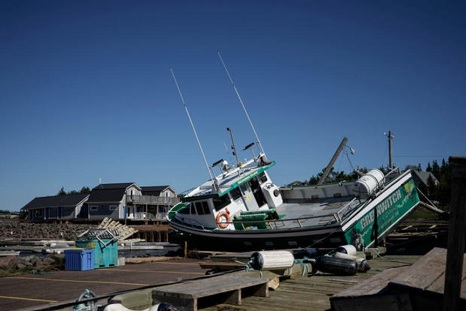
Body found as Canada struggles to restore power after storm – ‘Everything is unusable’
Hundreds of thousands of people in Atlantic Canada remained without power Sunday and officials said they found the body of a woman swept into the sea after former Hurricane Fiona washed away houses, stripped off roofs and blocked roads across the country’s Atlantic provinces. After surging north from the Caribbean, Fiona came ashore before dawn Saturday as a post-tropical cyclone, battering Nova Scotia, Prince Edward Island, Newfoundland and Quebec with hurricane-strength winds, rains and waves. >click to read<
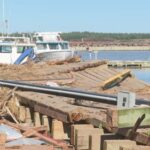 ‘Everything is unusable’: Fishers, farmers assess damage as Fiona wreaks havoc on industry – Officials have said areas exposed to storm surges have seen the most severe damage from the storm. In Morell, the Red Head Harbour wharf was almost completely totalled. Ken Drake was one of the fishers who spent Friday night there keeping an eye on their boats. He said all the boats have at least some damage. >click to read< 08:05
‘Everything is unusable’: Fishers, farmers assess damage as Fiona wreaks havoc on industry – Officials have said areas exposed to storm surges have seen the most severe damage from the storm. In Morell, the Red Head Harbour wharf was almost completely totalled. Ken Drake was one of the fishers who spent Friday night there keeping an eye on their boats. He said all the boats have at least some damage. >click to read< 08:05
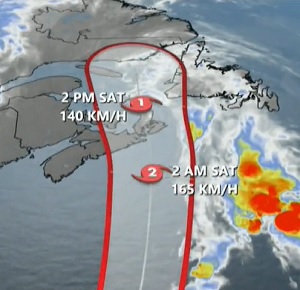
Hurricane Fiona threatens severe impacts across Atlantic Canada
Hurricane Fiona is roaring through the western Atlantic Ocean as a powerful Category 4 storm. The hurricane will brush Bermuda overnight Thursday before threatening major impacts across a large portion of Atlantic Canada. This is already a deadly hurricane. Five people died after Fiona produced devastating flooding across Puerto Rico as the storm traversed the Caribbean Island. Summer’s final sunset saw a powerhouse of a storm in Hurricane Fiona. The U.S. National Hurricane Center (NHC) found the storm had maximum sustained winds of 215 km/h on Wednesday evening. Some additional strengthening is forecast through Wednesday night, with some fluctuations in intensity possible on Thursday. Forecasters are keeping a close eye on potential impacts across Atlantic Canada for this weekend. Video, images, >click to read< 10:56
Coast Guard responding in wake of Hurricane Fiona, continues monitoring storm impacts
MIAMI — Personnel from the Seventh Coast Guard District in Puerto Rico and the U.S. Virgin Islands are responding to the aftermath of Hurricane Fiona, Monday.
Crews from Coast Guard Sector San Juan and Coast Guard Air Station Borinquen conducted initial storm damage assessments throughout the region and are prepared to support urgent search and rescue needs. Fast Response Cutter crews conducted storm avoidance to prevent damage inport by heading out to sea and returned to San Juan today for fuel and logistics before resuming patrol missions.
The Coast Guard set Port Condition FOUR today, opening the maritime ports in the U.S. Virgin Islands, and the maritime ports of Arecibo, Ceiba, Culebra, Fajardo, San Juan, Vieques and Yabucoa in Puerto Rico following the passing of Hurricane Fiona. The Port of San Juan is restricted to conducting daylight operations only until further notice. All other seaports in Puerto Rico remain closed under Port Condition ZULU until further notice, including:
- Guanica
- Guayama/Las Mareas
- Guayanilla
- Mayagüez
- Ponce
- Salinas/Aguirre
- Tallaboa
During Port Condition FOUR, port facilities are open to all commercial vessel traffic and cargo operations may resume, including bunkering and lightering. All mariners are advised to use caution due to floating debris and report any abnormalities to the Coast Guard.
During Port Condition ZULU, the port is closed to all commercial traffic except for traffic specifically authorized by the Captain of the Port. Port cargo operations are suspended, including bunkering and lightering until further notice.
Mariners can view the latest port updates on the Coast Guard’s Homeport site.
As Fiona continues to travel through the Caribbean islands and into the Atlantic, the Coast Guard is reminding the public of these important safety messages and warnings:
- Stay off the water. The Coast Guard’s search and rescue capabilities degrade as storm conditions strengthen. This means help could be delayed. Boaters should heed weather watches, warnings and small craft advisories.
- Evacuate as necessary. If mandatory evacuations are set for an area, the public should evacuate without delay. Coast Guard personnel and other emergency responders may not be able to evacuate or rescue those in danger during the storm.
- Secure belongings. Owners of large boats are urged to move their vessels to inland marinas where they will be less vulnerable to breaking free of their moorings or to sustaining damage. Trailer-able boats should be pulled from the water and stored in a place that is not prone to flooding. Those who are leaving their boats in the water are reminded to remove EPIRBs and to secure life rings, lifejackets and small boats. These items, if not properly secured, can break free and divert valuable search and rescue resources to ensure people are not in distress.
- Stay clear of beaches. Wave heights and currents typically increase before a storm makes landfall. Even the best swimmers can fall victim to the strong waves and rip currents caused by hurricanes. Swimmers should stay clear of beaches until local lifeguards and law enforcement officials say the water is safe.
- Be prepared. Area residents should be prepared by developing a family plan, creating a disaster supply kit, having a place to go, securing their home and having a plan for pets. Information can be found at Ready.gov.
- Stay informed. The public should monitor the progress and strength of the storm through local television, radio and Internet. Boaters can monitor its progress on VHF radio channel 16. Information can also be obtained on small craft advisories and warnings on VHF radio channel 16.
People in distress should use 911 to request assistance whenever possible, or VHF radio channel 16 for mariners. Social media should not be used to report distress.
For information on Hurricane Fiona’s progress and hurricane preparedness, please visit the National Hurricane Center’s webpage.
For more breaking news follow us on Twitter and Facebook.
-USCG-
U.S. Coast Guard 7th District Puerto Rico and U.S. Virgin Islands
Contact: Coast Guard Puerto Rico PA Office
Office: 787-729-2381
After Hours: 787-510-7923
7th District Puerto Rico and U.S. Virgin Islands online newsroom
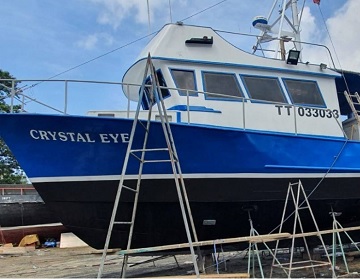
Captain: Monster waves wrecked ideal fishing trip and boat
When Captain James Kirwan, 59, and his crew set sail from Chaguaramas aboard Crystal Eye on Thursday for a week of fishing in Tobago waters, the only thing on their minds was the number of shark and tuna they intended to catch. However, just a few days into the trip, Kirwan and four fishermen had to abandon ship and jump into the Caribbean Sea on Saturday night, after huge waves crashed into the 55-foot trawler causing it to sink. “Everything was all right. The weather wasn’t bad. We already had 3,400 pounds of shark and some other big fish. I decided to let the crew pack up the gears and take a rest.” Moments later the sea turned rough,,, >click to read< 12:37

Five fishermen rescued after boat sinks: ‘God saved us from drowning’
According to reports, the 55-foot trawler with 350 hp engine, captained by James Kirwan, and owned by Christopher Ragbir, began taking in water around 7pm near the marine border with Grenada. The men on board were Kirwan, 59; Kyle Dyer, 31; Azim Baksh, 35; Keston Frederick, 36; and Jerome Nicome, 63. Before the boat submerged, distress calls were sent but the signal was too weak. Frightened and in frigid conditions, the men, wearing life jackets, jumped into the Caribbean Sea as the boat went under. The men said it was their prayers to God that delivered them from tragedy. photos, >click to read< 08:57
Blame it all on what we’re catching! By Nils E. Stolpe
FishNet-USA/04/01/06 – The entire focus of what is considered fisheries management today is on first blaming (generally commercial) fishing for any situation involving the perception that there are not enough fish, and then controlling (generally commercial) fishing to return a population of fish to what is presumed to be some optimum level. And most recently this has even been extended to restoring once healthy habitat that has been supposedly compromised by (generally commercial) fishing.
Why this focus on fishing? The logical answer would seem to involve an old adage dealing with smoke and fire. Is that necessarily so, or are there other factors at work instead?
A very brief history of wildlife management in general
Even before we in the colonies were attempting to hunt bison and passenger pigeons and anything else that was fit to eat or wear or shoot into extinction, the folks in Europe were realizing that such a strategy didn’t bode well for the future of small furry and finny creatures. Accordingly, the creatures were all claimed by members of the aristocracy, who proceeded to manage them (or more correctly, to have them managed) on their estates and on public lands. Needless to say, this was a fairly simple undertaking, aimed at controlling fairly simple and fairly artificial systems to “sustainably” produce a handful of desirable critters for the lords and ladies of the manor and their guests to eat or catch or shoot. Apply a few simple rules – don’t shoot too much, don’t catch too much and keep the peasants out – and you’d be in business for decades. This was because there were few factors affecting the highly controlled forests or lakes or rivers other than harvesting.
Moving forward – or perhaps not, at least as far as effectively managing fisheries was concerned – a few hundred years, in a lecture given at the Fisheries Centennial Celebration in 1985 (The Historical Development of Fisheries Science and Management, http://www.nefsc.noaa.gov/
Royce followed this with “the dry wit of Milton C. James, who for many years was the Assistant Director for Fisheries of the U.S. Fish and Wildlife Service, is as pertinent today as it was in 1950 when he made that statement at the Gulf and Caribbean Fisheries Conference.” We agree with Royce completely here, but probably not for the same reasoning. What James wrote wasn’t pertinent in 1951, it wasn’t pertinent in 1985 and it isn’t pertinent today. At least back in 1951 we didn’t know any better, but by 1985 it should have been obvious that there were many other factors, both man-caused and natural, that affected our fish stocks.
Have we grown out of it?
A rational and well-informed person, one who was familiar with the advances that have been made in the last half a century in understanding ecosystems, how they function and what our effects on them are, would assume that fisheries management had gotten beyond the simplistic view that (mostly commercial) fishing was invariably the major determinant of the health of fish stocks. With increasing knowledge of the downstream impacts of what goes on upstream, with the detection of various chemical pollutants in marine organisms far removed from any identifiable source, with the identification of weather/climate cycles and the attendant regime shifts that they bring about, and with a realistic grasp of the importance of wetlands and estuaries to inshore and near shore fisheries, it’s hard to imagine that we haven’t moved beyond the “blame it all on fishing” paradigm.
Unfortunately, the belief that if you can limit fishing you’ll be able to protect the fish is still at play in marine fisheries management today. In spite of the fact that estuaries and oceans are tremendously complex systems affected by myriad natural and anthropogenic activities, our fisheries management system is still based on controlling the fishery by controlling the harvest.
This is most convincingly demonstrated by the fact that in fisheries management only two sources of mortality are recognized. One of these is – you guessed it! – fishing mortality. The other is termed natural mortality, though it is defined as “that component of total mortality not caused by fishing, but by natural causes such as predation, diseases, senility, pollution, etc.1”
“Refining” this definition of natural mortality, we have from NMFS “that part of total mortality applying to a fish population that is caused by factors other than fishing. It is common practice to consider all sources together since they usually account for much less than fishing mortality.2” While it’s kind of hard to imagine that fishing is “usually” the major cause of mortality in a fish population (of all of the hundreds or thousands or millions of eggs that a fish produces each year, a very, very small proportion survive to be caught by fishermen), and while it’s guaranteed to skew every discussion of mortality in fisheries against fishing, that’s the official government position.
Note that pollution is considered a part of natural mortality, as are any other anthropogenic effects other than fishing. We’ll get back to that later, but for now, consider the ramifications of recognizing only two sources of mortality, one “natural” and the other caused by fishing, when dealing with a fish population.
It’s been ingrained in modern society that anything that is “natural” is considered to be good and desirable, and woe to anyone who would dare to trifle with the natural order of things. Who could forget the “it’s not good to fool Mother Nature” margarine commercials of a few years back? Of course, the average person doesn’t have any idea that when it comes to fisheries management, mortality brought about by pollution, in fact mortality brought about by anything other than fishing, is considered “natural,” and is automatically considered “good,” leaving fishing as the only “unnatural” factor affecting fish stocks.
Is this the wrong way to manage?
If commercial fishing were the only, or even the predominant, source of mortality impacting a fish stock, then no one could argue that focusing on managing commercial fishing wouldn’t be the most effective way of managing it. On the other hand, it seems equally inarguable that if commercial fishing weren’t the only or the predominant source of mortality, then to focus solely on commercial fishing wouldn’t be effective. Rather, such a focus would be a virtual guarantee that commercial fishing on that stock would be “managed” into oblivion.
As evidenced by commercial fishery after commercial fishery enduring ever-increasing restrictions for year after year with no relief in sight, managing fish stocks by relentlessly cutting back on commercial fishing effort isn’t working the way it’s supposed to be. The anti-fishing activists blame this on a fishery management system that is compromised by conflicts of interest and is therefore unwilling or unable to impose the strong medicine that, in their estimation, curing our fisheries requires. Accordingly, they are in the midst of a campaign to amend the Magnuson Fisheries Conservation and Management Act to remove the slight bit of flexibility from the management process that at this point is the only thing allowing a number of commercial fisheries to survive.
But what if there are factors at work on particular fish stocks, factors that would be considered “natural” by the fisheries managers and thus unworthy of their attention, that are significantly influencing the health of those stocks?
A major “natural” source of mortality
We’ll start with the easiest and most understandable factor with the potential to significantly affect our fisheries, human population growth on the coasts, or more precisely, the impact of that growth on the productivity of inshore and near shore waters. If you’ve bought into the fisheries managers’ vocabulary, this is a “natural” source of fish mortality that is insignificant when compared to fishing mortality. But is it?
In the U.S. the population on the coasts has been and continues to increase at a greater rate than the general population. This is a worldwide trend. Every year there are more people, and every year more of them are living on the coasts.
Crossett, Culliton, Wiley and Goodspeed (2004, Population Trends Along the Coastal United States: 1980-2008, US Dept. Of Commerce/National Ocean Service) document the dramatic increase in population in coastal counties in the U.S. from 1980 to 2000. The only state that didn’t experience a significant increase in its coastal population density during this period was Alaska. Regionally, the coastal population density increased 18% in the Northeast, 58% in the Southeast, 45% along the Gulf coast and 45% for the Pacific states (including Alaska and Hawaii).
This coastal population explosion is unquestionably accompanied by increases in non-point source pollution, in recreational boating, in harmful algal blooms and so-called dead zones3, in the loss of productive wetlands, in the amount of household chemicals and pharmaceutical “residues” making their ways into coastal waters, in the amount of impervious ground cover and the corresponding increase in water borne sediments, with a host of side effects with the demonstrated potential to directly or indirectly impact the health of fish stocks.
In the U.S. “five of the 10 most populated watersheds are located from southern Virginia to New England. The Hudson River/Raritan Bay and Chesapeake Bay watersheds were the most populated overall, with over 13 million and 10 million people, respectively.” (from Crossett, Culliton, Wiley and Goodspeed). We’re not making much of a leap when we assume that this coastal population increase has had negative impacts on inshore and near shore water, nor that there would be an accompanying effect on the resident and migratory fish stocks.
How does this apply to New England Groundfish?
With cut after cut being inflicted on the groundfish fleet, there still aren’t enough fish – at this point cod and yellowtail flounder in particular – to meet the rigid “rebuilding schedules” imposed after the passage of the Sustainable Fisheries Act. Under the latest management proposal, boats are to be allowed on the order of twenty days a year to fish for groundfish. The fleet average in the ‘70s and early ‘80s was perhaps 200 to 250 days. The proposed cuts represent a reduction of perhaps 90% in fishing time per vessel over several decades (without even taking into consideration what have been significant reductions in the fleet size). As Chart #1 indicates, since the passage of the Magnuson Act in 1976, the landings of these two species have declined dramatically in spite of the drastic and ongoing reductions in fishing effort.
This isn’t just characteristic of the cod and yellowtail flounder fisheries. In Chart #2, landings of the various species that make up the groundfish complex are depicted. In all of them fishing effort has being ratcheted downwards continuously (the increase starting in the late 1970s was an artifact of the passage of the Magnuson Act in 1976). Looking at this chart, it’s awfully difficult to believe that, along with fishing, there aren’t other factors influencing the stocks. If not, with such drastic reductions in fishing effort as the landings data indicate, why haven’t a greater proportion of the stocks recovered? At the same time, the coastal population in the Northeast continues to increase – as does the loss of wetlands, the amount of non-point source pollution, the recreational use of our waterways, etc. The attendant and undoubtedly increasing impacts on the fisheries, because they are considered to be part of the “natural” mortality and because the focus of fisheries management has always been on fishing, escape the managers’ scrutiny and the public’s attention while the groundfish industry faces cutback after cutback with no sign that relief is on the way. (For another example of this total focus on fishing, see “Brief history of the groundfishing industry of New England” on the Northeastern Fisheries Science Center website at http://www.nefsc.noaa.gov/history/stories/groundfish/grndfsh2.html).
If we assume that there are other factors that are negatively impacting the groundfish stocks, and if the fisheries managers continue to reduce fishing effort in a futile attempt to counteract them, what lies ahead for the New England groundfish industry?
The Chesapeake Bay
In spite of this, there has been a recent movement to blame the ills of the Chesapeake on the overharvest of two filter-feeding commercial species, oysters and menhaden. Landings in both of these fisheries have declined significantly in the Chesapeake in recent decades. As shown in Chart #3 below, menhaden landings have been declining for well over a decade and oyster landings since the 1950s. The menhaden fishery is not being overfished, though there are recognized problems with recruitment (the addition of young fish to the stock). The view being pushed by anti-fishing groups is that decline in the productivity of the Chesapeake isn’t responsible for the decline in these fisheries but vice versa. Understandably, some of the most vehement critics of the Virginia and Maryland commercial fisheries are among those 16 million people who live around, play on and flush into the Bay. Their endeavors on behalf of the Chesapeake would be far more effective if each of them, in company with a dozen or so neighbors, packed up and moved to North Dakota.
The one fisheries “success story” in the Chesapeake – the resurgence of the striped bass population – has been tarnished by recent reports that a large part of the population has been afflicted with mycobacteriosis a lethal bacterial disease that has been increasing in the Bay’s striped bass for at least a decade.5 Mycobacteriosis is linked to degraded water quality.
The situation regarding coastal development in Alaska is unique. With such a sparsely populated coastline, it’s hard to imagine that there are any impacts from coastal development, and though the coastal population density has increased slightly, according to the U.S.D.O.C. it won’t reach two people per square mile until 2008 (the following chart lists the state-by-state coastal population density). This is in strong contrast to the other coastal states, with coastal population densities ranging from 60 people per square mile (Maine and Georgia) to 1,777 (New York). While Alaska’s fisheries are considered to be among the world’s most well managed, as they rightfully should be, isn’t there another message in there as well? Why is managing fishing mortality effective in managing Alaska’s fisheries while it’s for the most part inadequate in other fisheries? New England and the Chesapeake Bay estuary are in no way unique. In fishery after fishery and for year after year, commercial fishing effort is reduced because fisheries management is all about reducing fishing mortality and not about much else. And while fishing effort is continuously reduced, the coastal population continues to climb and the attendant “natural” mortality continues to increase.
And Natural cycles in fish populations
Some fish stocks vary cyclically. Among the most well-known examples of this are the extremes exhibited by west coast sardine/anchovy stocks. Sardines off California go through a “boom or bust” cycle, to be replaced by anchovies as their populations plummet. This cycle, which was responsible for the collapse of the sardine fishery that had supported Cannery Row in Monterey, is driven by changes in oceanographic conditions brought about by a short-term “climatic” cycle of a 50 to 60 year duration and has been tracked back several thousand years.6
Related to the El Niño cycle and other factors, regime shifts in the Pacific drive periodic fluctuations in fish stocks. While research is not as well advanced, regime shifts are at work on fisheries in the Atlantic as well.7,8
One might argue that, in the face of declining fish stocks, rational fisheries management would demand a reduction in fishing effort, and in some instances that’s surely the case. But one could just as well, and more convincingly argue, that in rational fisheries management all sources of mortality should be identified and quantified and, to the extent possible, controlled. That should be one of the primary underpinnings of ecosystem management, but it isn’t happening. According to the management establishment, it’s only about fishing. Our fishermen and our fish are paying the price.
1 http://www.fishbase.org/
2 http://www.nefsc.noaa.gov/
3 http://www.whoi.edu/oceanus/
4 http://erf.org/user-cgi/
5 http://www.dnr.state.md.us/
6 http://news.
7 http://www.ices.dk/iceswork/
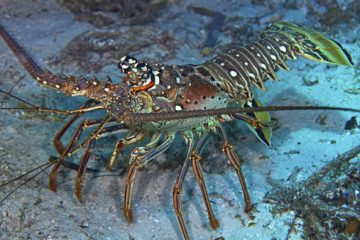
Spiny lobster season kicks off amid an unexplained population drop
The Caribbean spiny lobster commercial fishery in Florida average more than 5 million pounds per year,,, Valued at more than $40 million, the spiny lobster fishery is the second most lucrative commercial fishery in the state, behind shrimp.,, Since the 1990s, the population of the Caribbean spiny lobster has decreased 20%, which matters, not only to fisheries and spiny lobsters, but also to the entire food chain of Florida’s waters. “They’re a main food item for every other organism in the Florida Keys. Everything wants to eat little lobsters from snapper, grouper, even some herons. Matthews said while the American lobster is a “mean, nasty animal” not afraid to “fight to the death,” the Caribbean spiny lobsters are just the opposite. “They love to be in groups. They defend each other, and they are very social animals. >click to read< 12:04

Joseph Anthony Gann of San Diego has passed away
Joseph was born in the fishing port of Gloucester, Massachusetts, on December 19, 1925. He then moved to San Diego in 1926 at the age of one, with his parents Vincent and Nazare, and his two brothers Vincent and Edmond. Joe’s sister Lillian was born a few years later. His father built and operated a commercial fishing clipper.,, Joe then entered the fishing business with his brother Edmond and formed their company Caribbean Marine Service Co. Inc.; they soon became successful tuna-fishing fleet owners.,,, Joe went to congress to fight the 200-mile limit, and then in the 1970’s, along with Julius Zolezzi, he went to Samoa to facilitate the Fishing Treaty between the United States and Samoa. >click to read< 13:44
Cruise Ships: When are Maine and Massachusetts going to ban exhaust scrubbers?
12/29/2019
When are Maine and Mass going to ban exhaust scrubbers?
Scrubbers Poison Shellfish
Independent Investigative Research
An undue burden is being imposed on the lobster industry by foreign flagged ships that are dumping poisons on our lobsters.
This should be a violation of the Jones Act which is in need of a revision to address the exploding cruise industry. It should be viewed as an undue burden inflicted on a Port of Call by a foreign vessel.
Cruise Ships were not envisioned when this act was written. Cruise ships anchor all day right next to towns with their engines burning lots of fuel, and discharging sewage and graywater up and down the coast, and even while using scrubbers a cruise ship is still legally allowed to emit a deadly cloud of 1000 ppm sulfur dioxide into the air along with all the PAH’s and heavy metals that are normally emitted with that fuel, polluting the Port of Call and the coast with high sulfur fumes in the air while at the same time poisoning the water.
Scrubbers have been banned in a number of countries already including China, United Arab Emirates, Panama, Norway, Sweden, Denmark, Finland, France, Germany, Italy, Ireland, Spain, UK, Singapore, and the states of California, Connecticut and Hawaii.
It’s time for Maine and Massachusetts to jump in and protect their golden lobster and shellfish industry.
Cruise ships are not only killing off the Right Whales by running them over at night as they sleep or surface feed up in the Gulf of St Lawrence, they are poisoning the lobsters and all shellfish, which includes copepods, near the bottom of the food chain. They are poisoning our food and the Right Whales food too.
Please take out your devices and check out the latest Google Maps satellite view of Bar Harbor Maine using Safari as your browser. Anchored in Bar Harbor ME is the Royal Caribbean’s mega ship the “Anthem of the Seas”. A small city of 7,000 people burning 500 gallons of fuel per hour. That shipping fuel has 66 times the sulfur as any on-road fuel.
There is a large amount of white cloudy stuff being discharged and dispersed sideways, away from the ship, made possible by opposing the 2 stern thrusters.
It could be two things, graywater or scrubber wash water or both.
That cloudy white stuff has concentrated right against the Breakwater which is a heavily fished lobster hangout.
If they were spraying seawater down their funnel and pumping all that smoke into the fishing grounds, i.e. scrubbing, like 60% of the ships this year have been doing, then those heavy metals and carcinogenic PAH’s (polycyclic aromatic hydrocarbons)would also be flushed out the bottom of the ship.
According to many sources like the EPA and marine scientists here in Maine, these PAH’s are known to bioaccumulate in shellfish and are carcinogenic and /or mutagenic in mammals including the humans who eat those shellfish.
The EPA maintains some of these metals and chemicals still are exceeding safe limits after being scrubbed and diluted. They will be in the lobster tomalley which is a stomach. They bioaccumulate in clams, oysters and all shellfish.
These ships by law have to dilute these chemicals by flushing them out a pipe with 2 ½ million gallons of sea water a day. In Bar Harbor that would be into a field of thousands of lobster traps and right next to a town where lobstermen stash their lobsters in crates floating full of lobsters ready for market.
The inlet for making all their desalinated fresh water is in the bottom of the ship too. People on that ship drink that water. Cruise ships were not designed to use scrubbers.
Another thing. Why’s any machine allowed so close to a pristine tourist town while legally putting out 40,000 semi trucks worth of Group 1 carcinogenic sulfur dioxide all day into the air, violating the Bar Harbor 5 minute idling code by almost 10 million times over?
60,000 deaths have been attributed to shipping exhaust in and around shipping ports in Europe and 12,000 estimated by the EPA in the USA.
Bar Harbor is perhaps the worst polluted port on the East Coast due to the fact cruise ships run their engines all day emitting high concentrations of sulfur dioxide. People have been affected here according to that data.
You need to run a huge diesel generator to desalinate 150,000 gallons of sea water every day plus supply the electrical needs of a town of 7000 people. It takes 12 MW and that doesn’t count the 10 MW those thrusters could use. It takes about 500 gallons per hour of the dirtiest bottom of the barrel oil to make 12MW.
We get a direct hit with this fumigating plume too often when the once cherished, ocean scented sea breeze cools off Bar Harbor on a hot day. The diesel can be smelled all across town. It happened 3 times in a two week period here in Bar Harbor ME in the fall of 2018.
As asthmatics are particularly sensitive to tiny amounts of diesel they should pay close attention to these cruise ships. Even the little tenders that ferry in and out the passengers put out a blue cloud of smoke right at the dock which sometimes then wafts right up Main St. It might be wise to avoid Bar Harbor if your an asthmatic. It only takes a fraction of 1% sulfur dioxide to kick off an asthmatic attack.
Anyone looking to convene with nature in what was considered a pristine environment is now looking at the Anthem of the Seas crushing nature, despoiling the air and the sea and the view. Poisoned shellfish and dead whales at what cost?
There is good reason why no business brochures, pamphlets or Chamber of Commerce books have pictures of cruise ships in them. However that omission is now highlighted in satellite photos by Google Maps to the whole world.
It used to be, tourists, wouldn’t know about cruise ships until they rounded the bend coming into Bar Harbor and then BANG, humongous 10 to 12 story floating hotels with thousands and thousands of people absconding with an otherwise pristine vista changing the character of the whole area.
And yet another question arises due to the loss of the environmentally conscious tourist. How much are we losing off our bottom line entertaining cruisers? I have two weekly rentals and on just one day, unprompted, both had serious enough complaints that they said they would not come back to Bar Harbor and would not recommend Bar Harbor to anyone. One couple complained of the mob and went and got a cruise ship schedule so they could avoid being in town and spent most of their time elsewhere on MDI. The other couple couldn’t get the photo of Frenchman Bay they wanted from the top of Cadillac.
Many bad comments on Trip Advisor over the past 15 years have disseminated out through the Internet to the world. This has hurt our reputation. We are getting the short end of the stick and are now suffering the loss of our valuable land base customers. We are now branded a cruise ship port of call. We are not the village of Bar Harbor like our welcome sign says. We are only fooling ourselves.
Independent economic studies have verified the fact that cruisers leave only on average $1.17 per passenger in net profits in Bar Harbor while a year round resident owned vacation rental can net a hundred times that. It would only take the loss of two rental days over the course of one season at Bar Harbor’s estimated 1000 vacation rentals to negate any net profits from 200,000 passengers.
So from an environmentally conscious and financially responsible stance, I say the cruise ship industry, CLIA and their gang, should take their business model elsewhere. Preferably 200 miles downwind. Even better run it as a television sitcom called The Love Boat and follow it with Fantasy Island.
Jim O’Connell
40 year resident of Bar Harbor
Studied MPE, Wentworth Institute of Engineering Technology, Boston
Contaminated wastewater from ships harmful to orcas: WWF study – Several jurisdictions have banned open-looped scrubbers on commercial and cruise ships, including California, China, and Malaysia. Canada allows,,, >click to read<
The economic sham. Cruise ship economic impact overstated – >click to read<
Carnival the likely cause of 18+ Right Whale deaths in the Gulf of St Lawrence. – >click to read<
NOAA Issues Final Rule to Require Turtle Excluder Device Use for all Skimmer Trawl Vessels 40 Feet and Greater in Length
ISSUE DATE: December 19, 2019 FB19-080
CONTACT: Michael Barnette, 727-551-5794, [email protected]
In an effort to strengthen sea turtle conservation efforts, NOAA Fisheries published a final rule to require all skimmer trawl vessels 40 feet and greater in length to use turtle excluder devices (TEDs) in their nets. A TED is a device that allows sea turtles to escape from trawl nets. The purpose of the rule is to aid in the protection and recovery of listed sea turtle populations by reducing incidental bycatch and mortality of sea turtles in the southeastern U.S. shrimp fisheries.
WHEN RULE WILL TAKE EFFECT:
Skimmer trawl vessels 40 feet and greater in length that are rigged for fishing are required to install TEDs in their nets by April 1, 2021. For purposes of this rule, vessel length is the length specified on the vessel’s state vessel registration or U.S. Coast Guard vessel documentation required to be onboard the vessel while fishing.
NEW TED REQUIREMENTS AND ADDITIONAL INFORMATION:
Skimmer trawl vessels 40 feet and greater in length rigged for fishing will be required to install and use TEDs designed to exclude small turtles in their nets. Specifically, the space between the deflector bars of the new TEDs must not exceed 3 inches; escape openings must be oriented at the top of the net; and there are potential webbing restrictions on the escape opening flap depending on the type of TED grid and escape opening configuration. For purposes of this rule, vessel length is based on state fishery license or vessel registration information required to be onboard the vessel while fishing.
NOAA Fisheries originally published a proposed rule in December 2016 that would have required all skimmer trawl, pusher-head trawl, and wing net vessels to use TEDs in their nets. In response to public comment and further deliberation, however, the final rule was revised.
Additionally, NOAA Fisheries also amended the allowable tow time definition. The new definition requires all vessels operating under the allowable tow time limit (e.g., skimmer trawl vessels less than 40 feet in length, pusher-head trawl vessels, wing net vessels, live bait vessels, etc.) to remove and empty their catch on deck within the tow time limit (i.e., 55 or 75 minutes, depending on season). We believe the amended definition will improve the inspection of the net for potentially captured sea turtles and allow for their release unharmed.
The Gear Monitoring Team based out of the Southeast Fisheries Science Center Pascagoula Lab’s Harvesting Systems Branch will be conducting numerous workshops and training sessions for skimmer trawl fishers. Information on these sessions, as well as additional information (final rule, FEIS, FAQs) on the new TED requirements, will be posted on our website at: https://www.fisheries.noaa.gov/southeast/bycatch/turtle-excluder-device-regulations.
This bulletin serves as a Small Entity Compliance Guide, complying with section 212 of the Small Business Regulatory Enforcement Fairness Act of 1996.
Frequently Asked Questions
NEW REQUIREMENTS IN THE SOUTHEASTERN SHRIMP FISHERIES
What are the new requirements issued by NOAA Fisheries through this final rule?
Skimmer trawl vessels are currently allowed to use limited tow times in lieu of turtle excluder devices (TEDs). Tow times are the amount of time a net is pulled underwater; limited tow times reduce the number of turtles that drown.
We have issued a final rule that amends the tow time requirement and requires all skimmer trawl vessels 40 feet and greater in length rigged for fishing to use TEDs designed to exclude small turtles in their nets. Vessels less than 40 feet in length are still required to adhere to tow time requirements.
What is a TED and how much does it cost?
A TED is device which includes an opening to allow sea turtles to escape from trawl nets.
TEDs for the shrimp fisheries cost between $325 and $550 per net, and are available at multiple net shops.
Why did NOAA Fisheries issue new TED requirements?
We issued this new TED requirement because tow times are difficult to enforce and because we have received information that tow time requirements are exceeded by vessels with skimmer trawls and are less effective than TEDs for conserving sea turtles.
This rule is the next step in a long-term strategy for sea turtle conservation. Our sea turtle recovery and conservation program focuses on reducing primary threats, including reducing bycatch throughout the Atlantic and Gulf of Mexico fisheries.
This new TED requirement is intended to further reduce bycatch (sea turtles caught unintentionally) and mortality of threatened and endangered sea turtles in the southeastern shrimp trawl fisheries in accordance with the Endangered Species Act (ESA). We estimate as many as 1,158 threatened and endangered sea turtles will be protected and conserved annually as a result of this rule. TEDs may also reduce bycatch of additional species such as sturgeon and other fish.
Who would be affected by the new requirements in the southeastern shrimp fisheries?
All fishermen using skimmer trawls rigged for fishing on vessels 40 feet in length and greater. For purposes of this rule, vessel length is the length specified on the vessel’s state vessel registration or U.S. Coast Guard vessel documentation required to be onboard the vessel while fishing. Skimmer trawl vessels less than 40 feet would continue to be regulated by tow time restrictions.
When are the new requirements effective?
All affected vessels rigged for fishing must have TEDs installed in their nets by April 1, 2021.
Are the new TED requirements different than existing TED requirements for other vessels?
Yes, the new TED requirements are designed specifically to help exclude small sea turtles that frequently occur in shallow, coastal waters where skimmer trawls operate.
The new TED requirements include several configurations that use a TED grid with 3-inch (7.6 cm) bar spacing (i.e., less than the current 4-inch bar spacing maximum) and escape-opening flap specifications with lighter webbing that would allow small turtles to effectively escape the trawl net.
Where can I find information on the new requirements?
The final rule is available in the Federal Register. Additional information is posted on our website at: https://www.fisheries.noaa.gov/southeast/bycatch/turtle-excluder-device-regulations.
Additionally, we distributed Fishery Bulletins to industry representatives, state agency partners, media, and other constituents.
Did NOAA Fisheries analyze the effects of southeast shrimp fisheries on sea turtles and other endangered or threatened species?
Yes, we analyzed the effects of the rule to require TEDs in skimmer trawls on sea turtles and other listed species in a final environmental impact statement (FEIS). The FEIS includes several management alternatives aside from the final rule, and information on the effects of all the alternatives to the physical, biological, human, and administrative environments.
The FEIS is posted on our website at: https://www.fisheries.noaa.gov/southeast/bycatch/turtle-excluder-device-regulations.
Does the Fisheries Service plan to reinitiate consultations under the Endangered Species Act?
The shrimp fisheries currently have ESA Section 7 coverage and we regularly re-evaluates such fishery authorizations per the agency’s ESA responsibilities. Based on new sea turtle bycatch data, new species listings under the ESA, and the beneficial effects of this rule on sea turtle populations, we are developing a new Section 7 biological opinion on the effects of the shrimp fisheries on threatened and endangered species.
What effect does the final rule have on observer requirements for skimmer trawl, pusher-head trawl, and wing net (butterfly trawl) vessels?
The final rule has no effect on the observer program requirements. We currently require skimmer trawl, pusher-head trawl, and wing net (butterfly trawl) vessels, if selected, to carry observers. Observers collect catch and bycatch data from U.S. commercial fishing vessels to assist in the fishery management process. Observers are actively collecting data on sea turtles caught in skimmer trawls, pusher-head trawls, and wing nets (butterfly trawl).
What has changed in the final rule from the proposed rule?
The proposed rule would have required all skimmer trawl, pusher-head trawl, and wing net (butterfly trawl) vessels to use TEDs in their nets. Based on public comment and further deliberation, we have revised the regulation to limit the TED requirements to skimmer trawl vessels 40 feet and greater in length.
The changes in the final rule impacts 80 percent fewer fishers and reduces the overall economic impact by approximately 73 percent compared to the proposed rule, while retaining many of the environmental benefits.
Sign Up for Text Message Alerts
NOAA’s Text Message Alert Program allows you to receive important fishery related alerts via text message (SMS). Standard message and data rates may apply. You may opt-out at any time. Text alerts you may receive include immediate fishery openings and closures and any significant changes to fishing regulations that happen quickly.
Sign up for one or more of the fisheries-related alerts below by texting the following to 888777:
Gulf of Mexico Recreational: Text GULFRECFISH
Gulf of Mexico Commercial: Text GULFCOMMFISH
South Atlantic Recreational: Text SATLRECFISH
South Atlantic Commercial: Text SATLCOMMFISH
Caribbean: Text CARIBFISH
Other Contacts
Media: Kim Amendola (727) 551-5705, Allison Garrett (727) 551-5750
NOAA Fisheries Southeast Regional Office (727) 824-5301

Canada’s cocaine cowboys: How a two-year RCMP sting led all the way to Mexican kingpin El Chapo
It was March 12, 2015, and Stephen Tello was having second thoughts. The following day he was due to meet a man called Joe at a steakhouse in Toronto. Joe was a transportation broker who, for the right price, had told Tello he could smuggle huge amounts of cocaine into Canada. He could have drugs collected at sea in the Caribbean, he said, before swapping them onto fishing trawlers closer to Newfoundland, for safe passage to harbour. The two had met before, but their first deal hadn’t worked out. Now Tello, who lived a double life as a Toronto real estate,,, >click to read< 11:56

Bahamas’ $75 Million Spiny Lobster Fishery Has Been Set Back Years In The Wake Of Hurricane Dorian
Hurricane Dorian, which battered the Bahamas between September 1st and 3rd 2019, has devastated the islands’ $75 million Caribbean spiny lobster fishery. The vital economic sector, which employs more than 9,000 Bahamians, will take years to rebuild from the category-5 hurricane.,,, A Post-Disaster Damage and Needs Assessment carried out by the Food and Agriculture Organization during October 2019, confirmed that nearly 80% of the fisheries sector and its supporting infrastructure, including lobster and conch collection centres in Grand Bahama and Abaco, ranged from being significantly damaged to completely destroyed. >click to read< 11:28

Hurricane Dorian relief effort, thousands in need of help, at least 30 dead.
An international relief effort picked up across the Bahamas on Thursday after Hurricane Dorian, one of the most intense storms ever to hit the Caribbean, swept across the islands leaving at least 30 people dead and thousands missing. Bahamian Health Minister Duane Sands said the dead were from the worst-hit Abaco and Grand Bahama islands, which are home to about 70,000 people and where about 50 percent of homes are thought to have been either destroyed or severely damaged. >click to read< 10:35

ACLU Alleges Coast Guard Detained and Abused Fishermen
One night in the fall of 2017, four Jamaican fishermen set out into the Caribbean from the village of Half Moon Bay. As a lawsuit filed today describes it, their quest for tuna and snapper was supposed to last about two days. Then they disappeared. Five weeks later, those men—Robert Dexter Weir, Patrick Wayne Ferguson, Luther Fian Patterson, and David Roderick Williams—reemerged in Miami, covered in burns and blisters, according to the American Civil Liberties Union. United States Coast Guard officers had snatched them off their boat on suspicion of marijuana smuggling, then held them at sea for more than a month, shuffling them among various vessels en route to the U.S. to face trial, alleges the ACLU, which is suing the Coast Guard on the men’s behalf. >click to read<18:47 Weir v. U.S. – Complaint – >click to read<
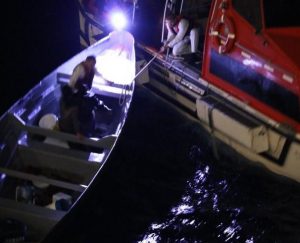
A Christmas Miracle – Cruise Ship Rescues Fishermen Lost at Sea for Three Weeks
Two fishermen have been rescued by a cruise liner after drifting out at sea for 20 days in what was described as a “Christmas miracle.” The sailors had been in the Caribbean Sea for nearly three weeks after their ship ran out of petrol when they were blown off from their gear during strong winds. The sailors had reportedly gone days without water, leaving one of the men unable to walk at the time they were rescued.The men were saved by the cruise only after it was forced to alter its original route toward Cuba because of a recent storm in the area. >click to read<09:28
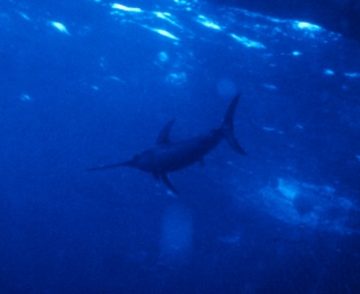
Uninformed vs. Science: The story of swordfish in the Northwest Atlantic is complex and subject to many versions of revisionist histories.
Every once in a while you read something that is so wrong, it sticks with you. A recent statement by the American Sportfish Association, (ASA), published in the Fishing Wire, met and exceeded the mark of just plain wrong. And to compound the affront, several marginalized groups threw in their support for good measure. I know better than to bark at the moon but here goes……………
Uninformed vs. Science
The story of swordfish in the Northwest Atlantic is complex and subject to many versions of revisionist histories.
Facts::
Swordfish are owned by all US citizens as a public resource. The US is allocated a historic 27% of the international quota of swordfish in the Northwest Atlantic. This allocation is a share of the Total Allow-able Catch (TAC) as determined by the International Commission for the Conservation of Atlantic Tuna (ICCAT). From the inception of ICAAT, the US has been considered a major harvester of swordfish. Our historic 27% has kept the US at the big table, exercising significant influence during international annual negotiations over highly migratory species (HMS), including swordfish. Over time we have used our strong share position to pry and cajole other ICCAT members to accept new realities on billfish, in-cluding marlin, minimum size regulations and improved reporting. During this tenure, many minor har-vesting nations, have continually petitioned ICCAT for a piece of the HMS pie or larger share.
Every month the NOAA Fisheries Service blasts an email containing the Atlantic Swordfish Landings update and upon arrival I continually grind my teeth at the numbers. For more years than can be count-ed the US pelagic long-line fleet has averaged harvests of a poor 30% of our adjusted quota of the North Atlantic Total Allowable Catch. To be clear, we are catching a scant 30% of our historically allocated 27%. Reasons for this poor showing are legion but include such causes as increased regulation including regulatory discards, closed areas, size restrictions and landing limitations; onerous vessel requirements including constant video observation and market conditions dictated by unrestricted foreign imports. This continued under performance denies the US public owners access to their swordfish resource and erodes our increasingly defenseless arguments against the reallocation of our swordfish quota to foreign nations with foreign fleets under limited or non-existent local regulation and restrictions.
The ASA statement correctly described the closure of the Florida Straits to pelagic long-lines in 2001 and went on to describe this as a “significant conservation victory”. The problem is that nothing could be further from the truth. The NMFS collects catch statistics from every commercial fishery operating in Federal waters in the US. It takes some time to analyze these numbers for each fishery but for swordfish the “hard” numbers are finalized in 24 months. The results for the 2001 swordfish harvest became avail-able in 2003 and revealed that swordfish in the NW Atlantic exceeded 100% spawning stock biomass. This meant that more than enough swordfish remained after harvest to replace the existing fish to healthy population numbers. We closed a significant piece of ground to fishing for one of the healthiest fish stocks in the US. This action and actions like this account for a piece of the loss of our harvesting abilities.
Fast forward 17 years to the same closed area off the Florida east coast. Pelagic long-lining is still pro-hibited, a recreational swordfish fleet has taken its place in everything but numbers and a scientific pro-posal is made to investigate the effects of the closure and allow a limited number of small long-line boats to fish the Straits. The over-riding intent of this scientific proposal and its required Exempted Fishing Permit (EFP) is to compare by-catch rates inside and outside the closed area. Aside from the infor-mation obtained on newer pelagic gear technologies, weak hooks to AIS buoys, the existence of a series of scientific studies within this and other commercial fisheries will not be lost on the international mem-bers of ICCAT. In addition to possibly refining this commercial gear further to the benefit of conserva-tion and gains against acquisition of our quota, a strong defense against redistribution of the uncaught US quota can be manufactured.
Scientific assessment of a management measure under fairly rigorous observation may beget contributions to strategic development of improved harvesting technologies to-ward improved quota performance, delay international reduction and redistribution efforts of the US NW Atlantic swordfish shares and ultimately preservation of our current 27% birth right. As proposed by the ASA and it marginally informed and involved supporters – opposition to this scientific study guarantees the status quo, declining US harvests and a successively weaker position internationally. It is important to remember and harder to forget that at the time of closure, this was one of the healthiest fisheries in the USA.
Consequences
Defeating an attempt to study certain aspects of management by area closure not only impacts this small commercial fleet but carries ramifications for all recreational anglers too – think Marine Protected Areas (MPAs). This fishery management tool is being used increasingly to limit or prohibit all fishing in an ex-panding number of US waters. Opposition to a study designed to compare catch rates and bycatch rates concurrently inside and out of the closed area would appear somewhat short sighted and ill informed. Is it possible that the experimental design being used here and the analytical techniques employed could benefit like and similar assays of MPA recreational closures? As with most things, the swordfish cuts both ways. We currently have a recreational fishing reservation off the Florida east coast but to preserve it we must oppose science and any attempt to measure its effectiveness for which it was originally pro-posed. Can we be so hypocritical as to demand future inspections and the application of science to his-torically favored recreational areas closed by management decree for the sake of stocks and the envi-ronment?
Unintended Consequences
Opposition to scientific study sounds like a bad position to even consider taking. Agree or disagree with the specifics of the study, this issue is a storm in need of a port. The consistently low catch number for the US fleet have us capturing less than 10% of the NW Atlantic Total Allowable Catch. At this level we are a minor harvester in everything but name. Each year at the international meeting where catch lev-els are determined the US continues to insist on rolling over a portion of our uncaught quota. After a
serious run of years, the unutilized US number has become the 900lb gorilla at the table. Other nations, most deserving a share, have territorial or historic claims that are increasingly hard to ignore. Predictions of redistribution are self fulfilling if we deny scientific inquiry into those measures that impact our ability to harvest our quota. You do not necessarily have to agree with the results or their interpretation but you can’t oppose the process. Lest I remind – our woeful performance is registering a scant 30% of our US swordfish quota.
Upon redistribution many of the gains we have made internationally with regard to marlin, small fish, and data collection become suspect. It can be expected that new shareholders will include countries in the Caribbean, Mexico and possibly others with reduced restriction, limited regulations and little or no conservation ethic concerning all highly migratory species. Commercial markets exist in many of these locales for some, or all, recreationally important billfish. To date, it has been the magnitude of our com-mercial harvests that has allowed us to introduce conservation measures to high-seas release regulations for marlins, imposition of size limits for other species and introduce some reporting and compliance re-quirements.
For me it is a question of serving the US public owners of these resources with both access to highly reg-ulated US caught and landed fish and preserving our hard fought and won highly migratory conserva-tion gains. Consideration of commercial access, recreational opportunity and continued conservation progress delivers the US public owners their birth right. Without continued scientific inquiry and in the absence of improving commercial harvests, we move rapidly toward the rocks. The predictable conse-quences of increased regulation, expanding MPAs and resulting landings reductions will impact our abil-ity to influence future international rule making, multi-national compromise and most importantly, inter-national compliance.
Conclusion
Though different in scale, fishing is fishing, both sport and commercial reduce a public property to pri-vate possession. Vocation or avocation, these industries share more in common than not. Local alloca-tion issues have proven difficult to resolve on occasion but unanimous support for science based man-agement has been a touchstone. Although this missive will be misinterpreted as a defense of US pelagic long-lining, it is rather a statement of simple recognition of the import of our commercial harvest num-bers as the basis for HMS management and reflect our present and future standing internationally
The proposed area of study was closed in 2001 when the fishery at issue was one of the healthiest in the US. Now in 2018, we have several lobbying groups opposing a scientific study of the area that not only will attempt to quantify the merits of MPAs as a management tool but critically does so at a time when our national quota is at grave risk. Studies of this kind offer incremental glimmers of hope to finding better ways around and through the imprecise pursuit of fish. These are some of my thoughts with re-gard to the consequences of a diminishing US pelagic long-line fleet and statements of opposition con-cerning any application of science. At some point, I believe it is in everyone’s interest, those that reduce fish to private possession, to prepare for a future of diminished international highly migratory species influence, US quota defense in the absence of US harvests and collateral highly migratory species loss. Pillorying the commercial guys and the scientists that propose to study their activity is ill-conceived and as I’ve stated, generally not well thought out. The ASA statement remarked that “our organizations see no legitimate need for the proposal” – guess I’m not alone barking at the moon.
Edward Gaw
HI-LINER Fishing Gear, Inc.
HI-LINER
FISHING GEAR AND TACKLE, INC.
3529 ENTERPRISE WAY, GREEN COVE SPRINGS, FL 32043
PH (800) 525-4327 FAX (904) 531-5099 www.hiliner.com
www.diamondfishing.com
EMF (Electromagnetic Field) Effects and the Precautionary Principle – Nils E. Stolpe/FishNet USA
EMF (Electromagnetic Field) Effects and the Precautionary Principle
Nils E. Stolpe/FishNet USA
Copyright 2017 Nils E. Stolpe
December 20,2017
The following is taken from an OSPAR Commission (https://www.ospar.org/) report from 2008. It clearly shows that at the time when interest in offshore wind turbines was really starting to grow there was very little knowledge of, nor had much significant research been done on, the effects of electromagnetic fields on marine or estuarine species, and what little had been done was on mature organisms, with little or no attention given to immature stages.
Background Document on potential problems associated with power cables other than those for oil and gas activities: Conclusions in regard to electromagnetic fields
Our current knowledge about effects of electromagnetic fields on the marine environment, in particular fauna, is not sufficient. Only a few preliminary conclusions can be reached.
Occurrence of magnetic fields associated with power transmission is best limited by field compensation to be achieved by an appropriate transmission system layout (preference of AC transmission systems or bipolarDC transmission system against monopolar systems). In case of monopolar transmission systems magnetic fields in close vicinity to the cable exceed natural ambient conditions significantly.
Directly generated electric fields are regarded to be controllable by adequate shielding. However, an induced electric field generated by the magnetic field occurs. In case of high current flows during power transmission the electric fields in proximity to the cable significantly exceed values typical under natural conditions.
Simulation studies revealed the potential for induced electric field mitigation by using highly specialized materials with high permeability or conductivity values for armouring of cables.
Development of modern materials with such properties has to be encouraged. Though cable burial will not effectively mitigate against magnetic fields and induced electric fields it is likely to reduce exposure of electromagnetically sensitive species to the strongest electromagnetic fields that exist at the ‘skin’ of the cable owing to the physical barrier of the substratum i.e. the greater distance to the cable, and cable burial should therefore be realized.
There is an apparent lack of information on electromagnetic fields emitted from communication cables (with electric components).
In regard to effects on fauna it can be concluded that there is no doubt that electromagnetic fields are detected by a number of species and that many of these species respond to them. However, threshold values are only available for a few species and it would be premature to treat these values as general thresholds. The significance of the response reactions on both individual and population level is uncertain if not unknown. More field data would be needed to draw firm conclusions but data acquisition under field conditions is complicated. (OSPAR Commission, 2008 – https://www.ospar.org/documents?d=7128)
An electromagnetic field (EMF) is “a field (as around a working computer or a transmitting high-voltage power line) that is made up of associated electric and magnetic components, that results from the motion of an electric charge, and that possesses a definite amount of electromagnetic energy” (Webster’s on-line dictionary). With the potential proliferation of offshore energy, telecommunications and internet infrastructure, (see “Fish Wars” or a Regime Shift in Ocean Governance? At http://www.fishnet-usa.com/Fish%20Wars%20or%20Regime%20Shift.pdf ), we can expect to see a corresponding increase in the propagation of EMFs in the oceans, and particularly in those parts of the oceans adjacent to population centers.
The Bureau of Offshore Energy Management (BOEM) has leased tens of thousands of acres of offshore ocean (for use from below the sea floor to hundreds of feet above the water’s surface) for siting offshore wind turbines, other electrical “generators” and the necessary support and transmission infrastructure. Part of the transmission infrastructure, in fact from the EMF perspective the most significant part, will be the vast network of transmission cables that will crisscross the ocean floors, potentially imposing significant (and perhaps insurmountable) barriers to some of the organisms that either live in proximity to or transit over such networks.
It’s plain from the quotation above that the scientific community didn’t have a clue about what these barriers might be, let alone how significant their impacts on marine fauna.
Several years later, in May of 2011, the U.S. Department of the Interior’s Bureau of Ocean Energy Management (BOEM) received a 169 page report with an additional 250 pages or so of appendices titled Effects of EMFs (Electromagnetic Fields) from Undersea Power Cables on Elasmobranchs and Other Marine Species (https://www.boem.gov/Environmental-Stewardship/Environmental-Studies/Pacific-Region/Studies/2011-09-EMF-Effects.aspx). The study was done for the Pacific OCS Region but wasn’t geographically limited and included an extensive bibliography that appeared to be world-wide in scope.
The Executive Summary starts “anthropogenic electromagnetic fields (EMFs) have been introduced into the marine environment around the world and from a wide variety of sources for well over a century. Despite this, little is known about potential ecological impacts from EMFs.”
From there it goes on for several hundred pages discussing just how much is not known about the effects of these fields on aquatic, estuarine and marine organisms, be they invertebrates, fish, amphibians, reptiles or marine mammals.
For a little bit of history, BOEM was formed during and was a direct result of the political fallout from the BP debacle in the Gulf of Mexico – aka Deepwater Horizon Oil Spill – that began in April of 2010 (and the bureaucratic response of which I wrote about – see NOAA Inaction in the Gulf of Mexico at http://www.fishnet-usa.com/NOAA_Inaction.pdf and Fish and Oil: NOAA’s Attitude Gap at http://www.fishnet-usa.com/FishAndOil.pdf).
Needless to say, some dramatic political intervention was called for, and not surprisingly that intervention resulted in the formation of yet another bureaucracy, the BOEM. But this bureaucracy was supposed to differ from its predecessor agency in more than its name. From BOEM’s current website:
OUR VALUES
Responsible Stewardship: The bureau is responsible for stewardship of U.S. OCS energy and mineral resources, as well as protecting the environment that development of those resources may impact. The resources we manage belong to the American people and future generations of Americans; wise use of and fair return for these resources are foremost in our management efforts.
Science-Informed Decisions: BOEM is committed to using the best available science in bureau decision making. To fill critical gaps in the information needed to inform the wide range of decisions within the bureau, BOEM facilitates world class research by talented scientists in many disciplines. The bureau also employs a significant number of scientists and technical experts across a range of relevant disciplines that provide the foundation of human capital needed to make sound decisions at all levels of the organization.
Integrity and Ethics: As public servants, we adhere to fundamental principles of ethical behavior. The bureau as a whole is committed to conducting its business according to the highest ethical standards. In accordance with the examples set by BOEM leadership, each BOEM employee is expected to conduct their daily operations in a way that demonstrates both professional and personal integrity. This includes a commitment to the highest level of scientific and scholarly integrity.
The following quotes are from the report submitted to BOEM in 2011.
“Studies indicate that sandbar shark also respond to magnetic stimuli. A magnetic sense may assist with seasonal migratory movements of adults and juveniles through coastal waters along the eastern seaboard. Thus, this combination of sensory capabilities and natural history attributes makes the sandbar shark a good example species for potential responses to power transmission cables from offshore wind generation facilities on the US East Coast.” (Page 68)
“Based on evidence for sensitivity to either electric or magnetic fields, fish species from 12 families in 10 orders were targeted for review in this report. This includes 183 species of fish that occur in coastal waters (bottom depth <200 meters) of the continental US. Either direct evidence for these species or evidence for a closely related taxon suggested that these species should be prioritized for consideration of potential sensitivity to EMFs.” (Page 75)
“…in some cases, segments of long power cable runs can transect migration routes, feeding grounds, or spawning sites for those species sensitive to EM fields and alter their normal behavior. Such effects are currently unknown.” (Page 77)
“…if a species uses a magnetic sense for homing capabilities, these capabilities maybe affected in close proximity to certain cable systems.” (Page 77)
“Induced electric fields may also potentially affect functions such as prey detection or social interaction and reproduction.” (Page 78)
“No studies were found that have tested effects of power cable EMFs (AC or DC) on salmon.” (Page 87)
“North Atlantic right whales inhabit coastal waters to at least 200 m, and because they have been observed to be feeding near bottom (180 m), this behavior may expose them to magnetic field levels above their sensitivity threshold. There is no scientific evidence as to what the response to exposures to such a field would be however.” (Page 96)
“Scientific studies examining effects of EMF on marine mammals have not been conducted. However, it is possible that many marine mammals are capable of detecting the magnetic fields resulting from undersea power cables, particularly those species that can detect the Earth’s magnetic field and use it (in addition to other cues) for migration. Responses to exposure to cable-induced magnetic fields are likely to vary depending on the geographic region for the energy project, available habitat for each species, the resulting intensity of the EMF cables orientation and direction combined with local geomagnetic intensity. In addition, depending on the depth of burial, those marine mammals feeding on benthic organisms may excavate or uncover buried power cables. Potential responses from exposure to EMF may include a temporary change in swim direction, a more serious delay to the animal’s migration, possibly stranding if EMF from undersea cables resulted in magnetic minima.” (Page 96)
“Responses to exposure to cable-induced magnetic fields are likely to vary depending on the geographic region for the energy project, available habitat for each species, the resulting intensity of the EMF cables orientation and direction combined with local geomagnetic intensity. In addition, depending on the depth of burial, those marine mammals feeding on benthic organisms may excavate or uncover buried power cables. Potential responses from exposure to EMF may include a temporary change in swim direction, a more serious delay to the animal’s migration, possibly stranding if EMF from undersea cables resulted in magnetic minima.” (Page 98)
“Many displacement and sensory manipulation experiments have proven that changes in field intensity and inclination angle can cause turtles to deviate from their original direction. The mechanisms for sea turtles sensory abilities are not known and to date, there are no data on impacts from magnetic fields from underwater cables for sea turtles.” (Page 105)
“Sea turtles are known to use multiple cues (both geomagnetic and nonmagnetic) for navigation and migration. However, conclusions about the effects of magnetic fields from power cables are still hypothetical as it is not known how sea turtles detect or process fluctuations in the earth’s magnetic field. In addition, some experiments have shown an ability to compensate for “miscues,” so the absolute importance of the geomagnetic field is unclear.” (Page 105)
“No direct evidence of impacts to invertebrates from undersea cable EMFs exists. Few marine invertebrates have ever been evaluated for sensitivity to electric or magnetic fields; and the available data for those that have been studied are limited. In addition, these magnetoorientation studies are focused on the behavior of mobile adults and the effects on their pelagic larval stages are poorly studied. Thus, discussion of potential impacts to invertebrates from anthropogenic EMFs must rely on speculation and very likely overlooks a number of sensitive species.” (Page 115)
“…disorientation within the range of the magnetic field surrounding some DC cables could presumably confuse or delay lobsters. Nonetheless, the (Florida or Caribbean spiny) lobster’s ability to rely on backup orientation and navigation cues and their adaptability to change in magnetic cues is not well known.” (Page 121)
“Acknowledgement of substantial gaps in our understanding of the effects of EMF in the marine environment should not be construed as a recommendation to avoid installation of new undersea cables until these gaps are closed however. The modeling presented in Section 4.1 is representative of the types of existing and proposed cables that are suitable to support the offshore wind (or other types of offshore renewable energy) industry and can be used to develop at least a preliminary understanding of field strengths of proposed cables. Coupled with the available information on the ability of various species to sense these fields, it is evident that there are spatial boundaries surrounding each cable beyond which the fields are unlikely to have an effect on biota. Historical use of undersea power cables (e.g., connecting islands and oilrigs to the mainland, offshore wind projects in Europe) provides no documented evidence in the literature of major impacts to marine species from EMFs although there have been few studies that have actually assessed the interaction between marine organisms and cable EMF. Given that the offshore renewable energy industry in the US is in its infancy, it is reasonable to believe that any potential risks of exposing particularly sensitive species or populations to EMFs from undersea cables can be substantially reduced by careful site selection, mitigation, and an increased knowledge base on the sensitivities and responses of marine species to EMFs to improve siting decisions. The current hierarchy of offshore wind project development anticipated in US waters, with early emphasis on the Mid-Atlantic and New England, allows us to focus on key species and research topics.” (Page 121)
This report demonstrates that no one had much of an idea of what the actual impacts of anthropogenic EMFs would be on estuarine/marine ecosystems even after several more years of intensive planning for and promoting of offshore energy production. So it was with some relief that I read near the top of the listing of BOEM values on their website that “the bureau is responsible for stewardship of U.S. OCS energy and mineral resources, as well as protecting the environment that development of those resources may impact” (my emphasis).
But it seems that to BOEM “protecting the environment” didn’t extend to EMFs. Three years after the above quoted BOEM funded report was completed, in Effects of offshore wind farms on marine wildlife—a generalized impact assessment (Bergström et al, 03/19/14), the authors wrote “there was paucity in studies on cumulative impacts and long-term effects on the food web, as well as on combined effects with other human activities, such as the fisheries. These aspects remain key open issues for a sustainable marine spatial planning (http://iopscience.iop.org/article/10.1088/1748-9326/9/3/034012/meta).
Then in 2016, quoting from A Review of the Evidence of Electromagnetic Field (Emf) Effects on Marine Organisms (Emma B*, Journal of Ecology and Environmental Sciences, 11/28/16) “it was logical to conclude that the worst outcome for the future would be if cable manufacturers disregarded the best available scientific advice regarding the potential effects of subsea cables. Presently, there is insufficient evidence to suggest biological impacts upon marine organisms from EMFs. Nonetheless, there is a significant gap in understanding of any long-term impacts marine organisms might face” (http://www.rroij.com/open-access/a-review-of-the-evidence-of-electromagnetic-field-emf-effects-onmarine-organisms-.pdf).
Apparently, and assuming that Bergström et al and Emma B. completed reasonable reviews of the literature, the people at BOEM haven’t taken their agency’s assurance that it’s personnel would protect the environment as they would like us to think they had, because we seem to know little more about EMF effects now than we did in 2011 (or previously).
Evidently the authors of the BOEM report in 2011 had quite a different perspective on the environmental acceptability of offshore cable installations.
Of course this difference in perspectives brings up the precautionary principle, to wit “when an activity raises threats of harm to human health or the environment, precautionary measures should be taken even if some cause and effect relationships are not fully established scientifically.” (Wingspread Statement on the Precautionary Principle,1998).
For an interesting discussion of the application of the Precautionary Principle when dealing with human exposure to EMF see the World Health Organization’s The Precautionary Principal and EMF (L.I. Kheifets, http://www.who.int/peh-emf/meetings/southkorea/Leeka_Kheifets_principle_.pdf).
Anyone who is familiar with fisheries management, particularly as it has “evolved” over the last decade or so, is almost certain to be familiar with the Precautionary Principle. As applied to fisheries it means that fishermen should not be allowed to do anything until it is proven beyond a reasonable doubt that what they wish to do won’t affect the fishery they propose to participate in, any other fishery, or the environment of the area where the potentially affected fisheries are located.
This makes it extremely difficult (if not impossible) to develop new fisheries or to expand existing fisheries – but some would argue that’s what fisheries management is for.
As far as the Precautionary Principle as applied to fisheries is concerned, Peter Shelley, Conservation Law Foundation Senior Counsel wrote in a 2009 CLF press release “we are dismayed that the NMFS chose to base its determination on untested hypotheses that leave the future of the wolffish to chance, rather than to use well-recognized principles of precaution to ensure its survival.” In April of 2012 in a CLF blog he wrote “we think catch levels were set too high, too little was done to reduce the growing cod catches of recreational fishermen, and nothing was done to balance fishermen’s economic and social pain by directing the small allocation of Gulf of Maine cod toward coastal fishing boats. The decision of the National Marine Fisheries Service (NMFS) to accept the New England Fishery Management Council’s quota recommendation had little to do with precautionary principles and much to do with politics.” And in the CLF blog Talking Fish in November, 2014, “the precautionary principle should have triggered greater caution by the managers and the fishing industry in the face of mounting uncertainty about the health of the remaining cod biomass but it didn’t. Now, the price has to be paid.” (This isn’t to imply that attempts to limit fishermen or fishing via the Precautionary Principle are limited to Mr. Shelley or the Conservation Law Foundation. To the contrary – and in spite of Mr. Shelley’s attempts to lump fisheries managers in with fishermen as ocean “bad guys,” the (over)application of the Precautionary Principal permeates federal fisheries management at every level, in large part due to strenuous lobbying efforts by foundation funded ENGOs including the CLF.
And yet, in shilling for the recently sunk Cape Wind Project (see What Was Once Hailed as First U.S. Offshore Wind Farm Is No More at https://www.bloomberg.com/news/articles/2017-12-01/cape-wind-developer-terminates-project-opposed-by-kennedys-koch) another CLF release titled Conservation Law Foundation Applauds DPU Conclusion That Cape Wind is in the Public Interest in 2010 stated “the Conservation Law Foundation (CLF) hailed today’s decision by the Massachusetts Department of Public Utilities (DPU) approving a fifteen-year contract for the sale of Cape Wind’s power and renewable energy credits to electric utility National Grid, a crucial step toward advancing the country’s first utility-scale offshore wind farm. The decision, based on extensive expert testimony and other evidence brought forward by supporters and opponents of the Cape Wind offshore wind energy project, reached the important conclusions that Cape Wind’s long-term power purchase agreement is “cost-effective” and “in the public interest,” and will deliver substantial benefits for ratepayers and the Commonwealth. John Kassel, president of CLF, said, “The DPU’s decision to approve the Cape Wind power purchase agreement brings Massachusetts one step closer to realizing the economic and environmental promise of offshore wind energy (https://www.clf.org/newsroom/conservation-law-foundation-applauds-dpu-conclusion-that-cape-wind-in-public-interest/ ).
From the Cape Wind Final Environmental Impact Statement (FEIS at https://www.boem.gov/Cape-Wind-FEIS/) Section 9-2 Lessons Learned From European Wind Farms: (Emphasis added)
“In order to identify possible lessons learned from other offshore wind energy projects, MMS reviewed the monitoring results from a recent study on two demonstration wind farms in Denmark (Horns Rev and Nysted), which have been the subject of research and monitoring programs to examine the potential environmental impacts of offshore wind farm projects. Horns Rev, constructed during the summer of 2002, is sited 8.7 to 12.4 miles (14 to 20 km) off the coast of Denmark in the North Sea, and consists of 80 turbines totaling 160 MW. Nysted was constructed between 2002 and 2003 approximately 6.2 miles (10 km) offshore in the Baltic Sea, and incorporates 72 wind turbines placed in 8 rows of 9 turbines each, with a total installed capacity of 165.5 MW. The monitoring data at both sites consist of three years of baseline monitoring, monitoring during construction, and three years of monitoring during operation. The environmental monitoring program focused primarily on the effects of construction and operation of the offshore wind farms on the infauna, epifauna, and vegetation of the benthic community; on fish, marine mammals and birds; and on peoples’ attitudes towards offshore wind farms locally and nationally….
Overall, the results from the Danish wind farms suggest that with proper siting and placement of turbines, offshore wind farms can be engineered and operated without significant damage to the marine environment and vulnerable species. In general, the monitoring results show that the wind farms seem to pose a low risk to birds, mammals, and fish. The studies stress that appropriate siting is an essential precondition for ensuring limited impact on nature and the environment, and that careful spatial planning is necessary to avoid damaging cumulative impacts. Important differences between the two sites were observed in the results of some studies, suggesting that environmental impacts are likely to vary by location even with careful site planning. Therefore, it is difficult to generalize the results of this monitoring program to potential environmental impacts at other offshore wind sites including the proposed action….
Conclusions reached from the Danish offshore wind farms, therefore, showed generally minimal environmental impacts over the long term at these sites, but enough differences between sites to recommend caution in generalizing too much from these limited studies. New benthic habitats were colonized fairly rapidly, without strong observed effects on the surrounding soft bottom communities. The effects of the offshore wind farms were neutral with regard to fish density, species composition and abundance, showing neither positive nor negative effects. Results from the study on the potential effects of EMFs were inconclusive. Marine mammals, in general, were affected during construction temporarily, but their use of wind farm areas recovered during the operation phase, with the exception of the porpoises at Nysted, which exhibited long-term avoidance of the area. Bird studies showed general avoidance of wind farm areas for migration in most species, as well as avoidance by some species that otherwise use the area as a feeding ground. Collision rates with turbines for a large diving duck, the common eider, during migration, were predicted and observed to be very low….”
The study at Nysted also looked for effects on fish and fish behavior that might be caused by the EMFs created by submarine cables during the operation phase of the wind farm. The Nysted study was not conclusive on this point, but suggests that there is no strong effect. There was some evidence of either avoidance or attraction to the magnetic fields depending on the fish species. The data, however, did not rule out the possibility that physical conditions, not EMFs, along the cables might have caused the observations. Only one species, flounder, showed a correlation between the inferred strength of the EMF and increased avoidance of the cable. It may be invalid, however, to assume that other species do not feel an effect of the EMFs; a weakness of this study was that the EMFs around the cables were not measured directly, and the strength of the fields was inferred from turbine output only, which may not be sensitive enough to produce a correlation.
It appears as if research on the EMF effects of these two “demonstration” wind farms in Norway were as cursory and as inconclusive as those that have been reported by other researchers cited above, being extremely limited temporally and spatially and in species/life stages considered.
Yet the FEIS for the Cape Wind project was apparently good enough for the Conservation Law Foundation, the personnel of which write about their focus on their website “together, we can ensure a healthy future for New England’s ocean. The ocean plays an integral role in New Englanders’ lives, our economy, and our communities. But pollution, overfishing, and climate change threaten its health and our future. CLF has safeguarded New England’s ocean for decades – from blocking oil and gas drilling on Georges Bank, to curbing overfishing, to pioneering smart ocean planning across the region. Today, we’re fighting for a clean, healthy, and productive ocean – for today and for generations to come.”
Obviously to ENGOs like the CLF the precautionary principle doesn’t apply to possible EMF effects in marine or estuarine environments the way it does to limiting fishermen and fishing – or to excoriating fisheries managers who have the temerity to disagree with the CLF in general and Peter Shelley in particular on how to best manage the New England fisheries.
But as anyone with even an elementary understanding of fish, shellfish and fisheries knows, one of main characteristics of many fish stocks is migratory behavior – either North (cold) and South (warm) or inshore and offshore. These migrations are not necessarily confined to adults and are not necessarily accomplished by the critters themselves but may be aided by ocean currents. Can anyone say with any certainty that EMFs spread across these migratory paths won’s interfere with the migratory patterns of recreationally/commercially important species of fish/shellfish, or on other species which they are dependent on? Or won’t interfere with reproductive behavior or larval development? The science on these issues is severely limited, yet the ENGOs and management bodies that are not willing to allow any management actions without “definite” proof that such actions won’t have even a minimal downside are more than willing to permit the installation of extensive networks of EMF producing cables adjacent to or within some of our most productive – and heavily fished – areas. Evidently In these instances the Precautionary Principle isn’t all that important – or seemingly makes no difference at all.
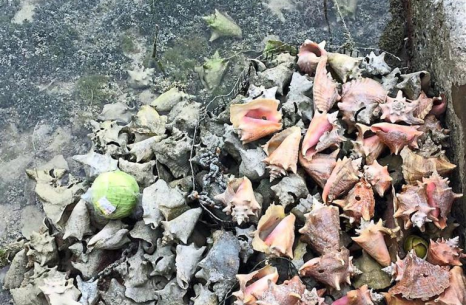
MPA’s – Conch herds face death by old age as young molluscs disappear
The queen of the sea, a monster mollusk that inspired its own republic in the American state of Florida, is in trouble. A marine preserve in the Bahamas, famed for its abundance of queen conches, is missing something too: young conches. Researchers studying the no-take park (where no collection of marine animals is allowed) off Exuma in the Bahamas, one of hundreds throughout the Caribbean, found that over the last two decades, the number of young has sharply declined as adult conches steadily matured and died off. The discovery also raises questions about the effectiveness of marine preserves, long viewed as a solution to reviving overfished stocks. If one of the Caribbean’s oldest and best marine preserves isn’t working to replenish one of its biggest exports – now regulated as tightly as lobster – what does that mean for other preserves and how they’re managed? click here to read the story 11:33

National Hurricane Center – Hurricane Maria Public Advisory
At 1100 AM AST, the eye of Hurricane Maria was located near latitude 16.3 North, longitude 63.1 West. Maria is moving toward the west-northwest near 10 mph (17 km/h), and this general motion is expected to continue through Wednesday night. On the forecast track, the eye of Maria will move over the northeastern Caribbean Sea today, and then pass near or over the Virgin Islands and Puerto Rico on Wednesday. Maximum sustained winds are near 160 mph (260 km/h) with higher gusts. Maria is a potentially catastrophic category 5 hurricane click here to read the update 11:23

Hurricane Irma blasts Florida: ‘Monster’ storm charges up coast after hitting Miami and Tampa
5.8 million without power as Hurricane Irma tracks coast – Storm kills at least four in Florida after 38 dead in Caribbean – 10,000 could have stayed in Keys to ride out hurricane – After Tampa, Irma heads to southern Georgia and South Carolina – Hurricane weakens to tropical storm, but surge threat remains – Stranded Britons told French planes can’t take ‘UK refugees’ – Richard Branson shares video of devastation on Necker island – Island by island: How Irma brought havoc to paradise click here to read the story, live updates.
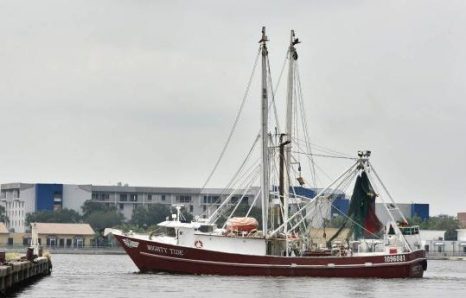
Mayport fishing vessels scramble for docks in Jacksonville in advance of Hurricane Irma
The entire First Coast shrimping and fishing fleet is in the process of moving away from the coast and into a safer docking space in downtown Jacksonville as Hurricane Irma bears down on Florida. While the storm is still churning in the Caribbean, about two dozen shrimp vessels from the Jacksonville area have retracted their nets and are leaving their usual port of Mayport. That’s where Safe Harbor Seafood is the main warehouse and wholesaler of the local catch operates. Gerald Pack, owner of Safe Harbor, said Thursday that shrimp boats and other fishing vessels, usually docked at the historic village about a mile from the mouth of the St. Johns River, have mostly headed to the old Shipyards docks that are girded with concrete near Metropolitan Park. click here to read the story 09:00
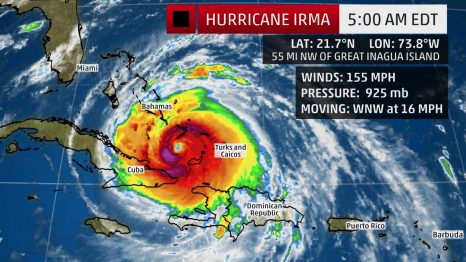
UPDATED: 23:00 Hurricane Irma a Potentially Devastating Category 4 Strike on South Florida Sunday After Raking Through the Bahamas
Hurricane Irma, a potentially catastrophic Category 4 hurricane, is now hammering parts of the Bahamas and Cuba, and will turn its fury on Florida in what is likely to be the state’s strongest hurricane strike since Charley 13 years ago. Below is everything we know about Irma right now, including its latest status, along with potential forecast impacts in the U.S. and the Caribbean Islands. click here to read the story
National Hurricane Center – Hurricane Irma Public Advisory 23:00 update click here 07:38






